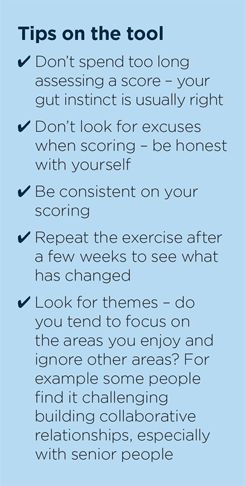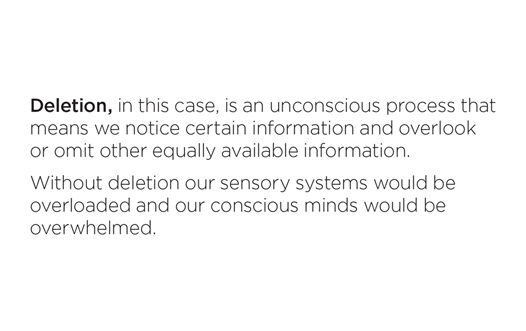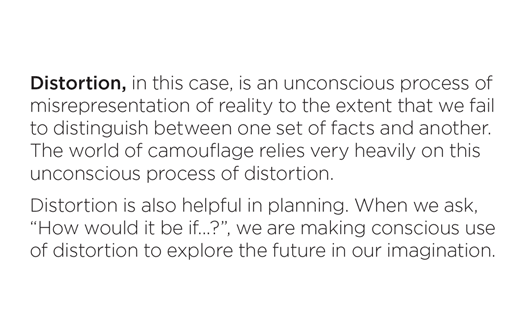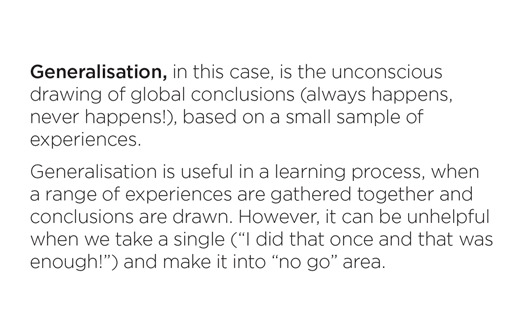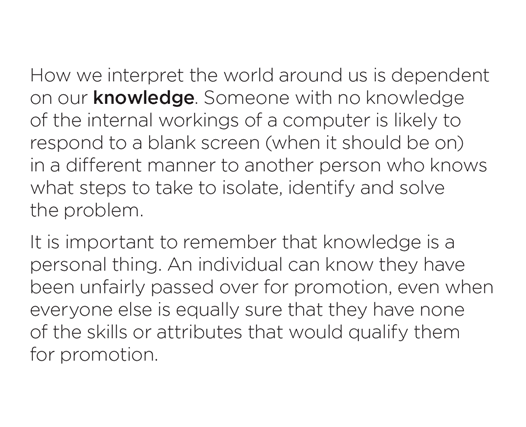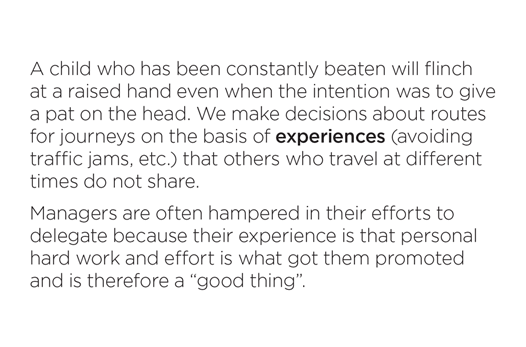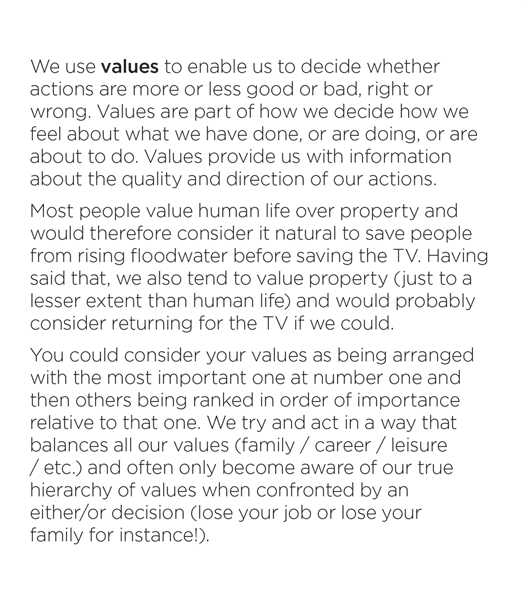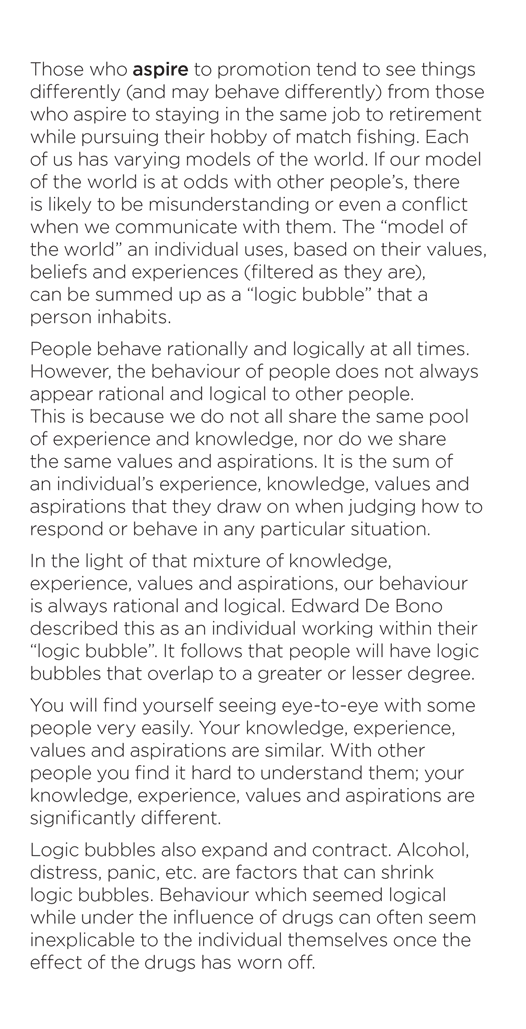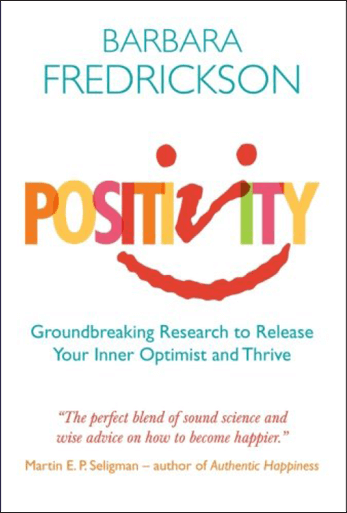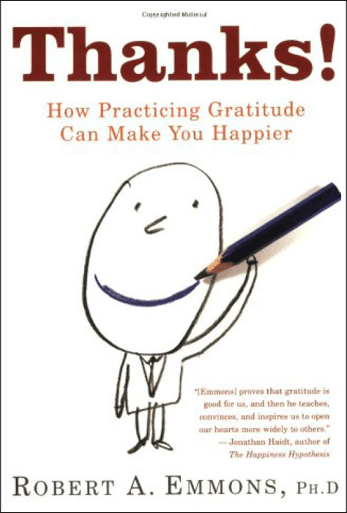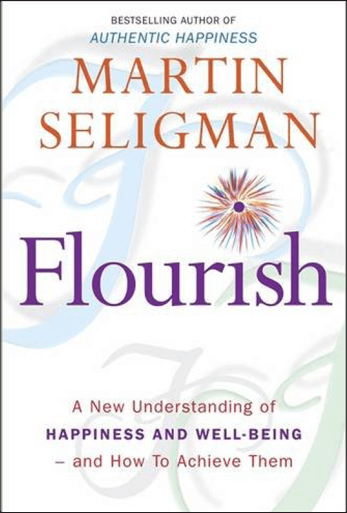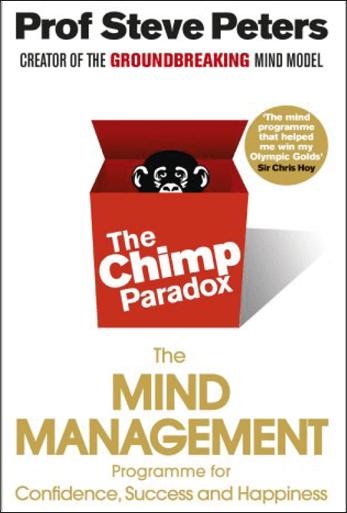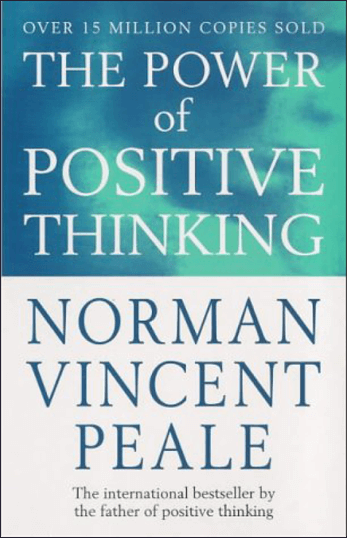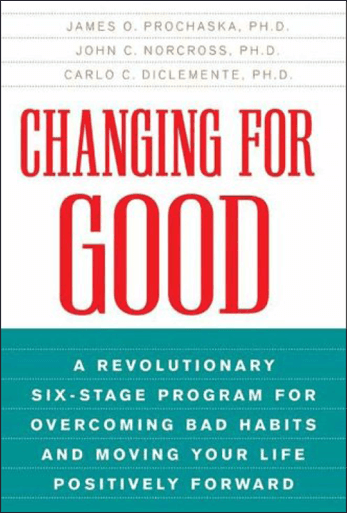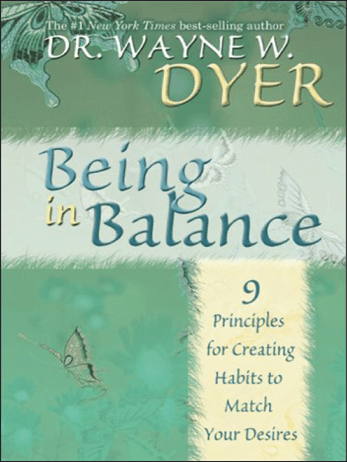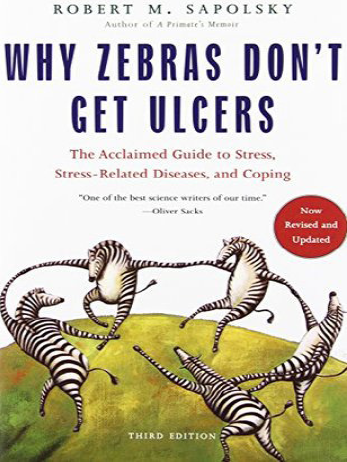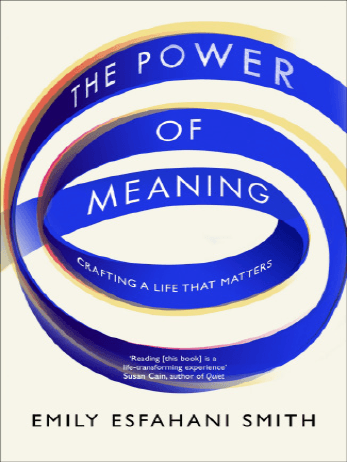





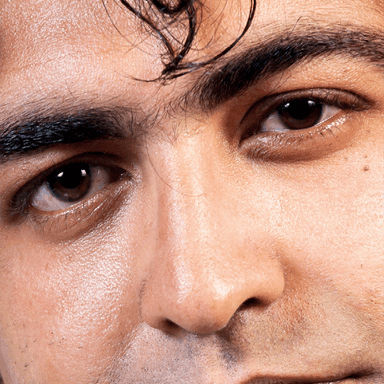



This toolkit has been designed to cater for different learning styles. Some may like to read full articles to understand a particular point; others will prefer practical aids that they can quickly learn and use. The following resources are available:
This contains all the information in one place. It is designed for you to “pick and mix” according to your areas of interest. Each module contains information, exercises and tools. At the end of the manual there is a list of further reading and resources should you wish to learn more. If you manage a team you may wish to use the manual for a team briefing on a particular aspect of wellbeing, or as a way of starting a conversation about how the team are feeling. Although this toolkit has been written for you in your professional capacity, wellbeing is not a subject that can be easily put into a “work life” box. You will therefore see some examples and references to life outside of work. It is up to you how you use the information, but when you are working through some of the tools you may find it interesting to think about the “whole” you rather than the “work” you.
These are designed for you to work through either on your own or with your team. When a module has a tool that can be accessed as a stand-alone tool you will see the above symbol.
Once you have worked through a tool you may wish to follow it up with a conversation with your supervisor to share your thoughts. Alternatively, you may prefer to work independently and absorb the findings in your working and/or home life.
The Police Mutual Foundation was launched in late 2011 as part of Police Mutual’s strategy to support the Police Service by delivering financial and wellbeing services to Police employees.
Improving lives is at the heart of everything we do. We’re passionate about investing in the wellbeing of the Police family and we focus on four key areas: mental wellbeing, physical wellbeing, financial wellbeing and your community wellbeing.
This toolkit has been developed by Lancashire Constabulary with funding support from the Police Mutual Foundation.
Police Mutual recognises the importance of wellbeing and how it influences individual and organisational performance. This toolkit is designed to promote best practice in the management of wellbeing within the Police Service.


We aim to provide effective and efficient wellbeing support to members of the Police Service. We do this by working in partnership with leaders of the Service, staff associations and occupational health teams across the UK to deliver a range of practical support, insight and learning.
So far the Foundation has provided:
- Free access to health and wellbeing guidance, exclusively for members of the Police Service
- Research and analysis into financial risk trends within the Police Service
- Free health screening, providing face-to-face, practical health advice
- Respite breaks for Police Officers and Staff, and specialist dementia breaks for retired Police Officers and Staff
- Funding for wellbeing projects being driven by Forces or Police organisations
- Force for Good community funding initiative
In this module we will look at some definitions of wellbeing in the workplace and briefly look at recent research. We will then consider what that means in terms of Policing. Finally, we will link wellbeing to leadership, resilience and the environment.
Philosophical interest in our wellbeing has been around since the time of Aristotle. Over recent years this interest has shifted from a philosophical enquiry to more of a scientific interest. There has been a growing body of scientific research into what contributes to people’s experience and enjoyment of life. Research suggests that wellbeing is dynamic. In other words, our wellbeing is based on our sense of how things are going for us which is drawn from our circumstances, activities and psychological resources. The research goes on to strengthen the case that high levels of wellbeing enable us to cope with difficult circumstances, engage positively with other people and be more creative in our thinking.
The dictionary definition of wellbeing is: “The state of being comfortable, healthy or happy”. This goes beyond focusing on the health of the workforce and leads to a more holistic approach. This toolkit is designed to support you to find resources and insights that will enable you to function better and change some patterns of behaviour that may be holding you back on enjoying life.
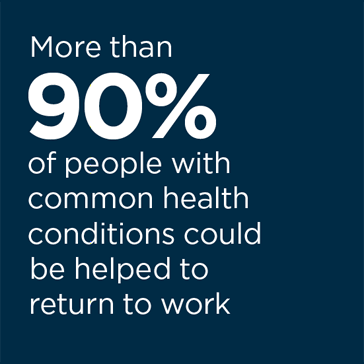
Here are some facts:
- Around 141 million working days were lost to sickness or injury absence in the UK in 2018 — equivalent to 4.4 days per employee; (Labour Market Survey)
- More than 90% of people with common health conditions could be helped to return to work if basic principles of good healthcare and workplace management principles were followed; (Waddell, G., Burton, A.K., and Kendall, N, Vocational rehabilitation: what works for whom and when?)
- Data from Vitality shows that the UK economy lost £91.9 billion in 2019 as a result of ill-health related absence and presenteeism in the workplace.
Sitting behind these statistics there are other costs too. The cost to the family of a parent who is on a reduced income, the psychological cost of being away from the workplace for a long period of time, the cost of the misery and isolation that individuals feel when they are not fully functional. Data published in 2019 by the Office for National Statistic’s (ONS’s) Labour Force Survey found that 17.5 million working days were lost in 2018 due to mental health-related sickness absence.
Being asked to describe, 'what is wellbeing?' is quite a tall order, as it means so many things to so many people.
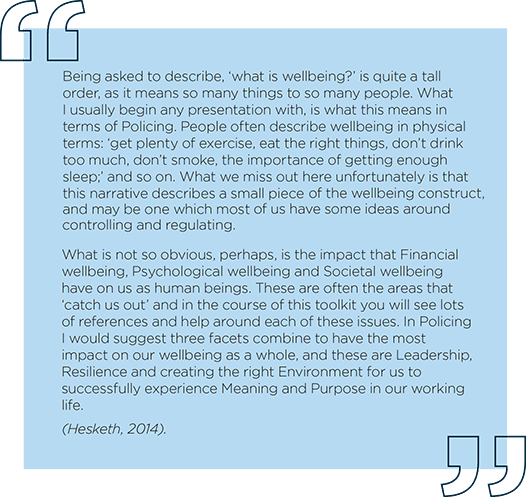
Over recent years a number of Police Forces have commissioned research into the current state of wellbeing. This has usually been completed through A Short Stress Evaluation Tool (ASSET) developed by Professor Ivan Robertson and Professor Cary Cooper of Robertson Cooper Ltd. There is a consistent theme in the findings, which is that there is vulnerability in the areas of long-hours working culture, and concerns around employee resilience. This may not come as a surprise as working long hours and shift work are an integral part of Police life. However, the challenge is what might be done to improve the impact of this on employee wellbeing. It is tempting to think of this in terms of reducing the number of days taken as sick leave (Absenteeism). However, that is only part of the picture. Many people come into work even if they are feeling ill (Presenteeism).
There are a number of reasons why people choose to do this including:
- Fear of not being around during an operational review
- Not wanting to look like you are not coping
- Feeling that there is too much work to be done to take time off
- Not wanting to face up to the fact that you are feeling the pressure
There will be other reasons too. The cost of this in real terms is between 1.5 and 5 times higher than the cost of absenteeism. A further consideration is that of leaveism, where employees take time off using their leave entitlements, when they are in fact unwell. This also extends to taking work home or on holiday, when it cannot be completed in paid working hours. Reasons for this could be loyalty and enjoyment, but could also be a manifestation of workload overload, fear of dismissal; and so on (Hesketh, 2014).
The National Policing Vision (2025) makes specific reference to the importance of workforce wellbeing, and the College of Policing has now developed a new police-specific framework that they believe is the first of its kind in law enforcement. This new Blue Light Framework contains learning from across the service, academia and Public Health England to provide forces with a self-assessment tool that sets a new standard for policing.
Please click the button below to view and download the Framework
We hope to add more guidance and frameworks from across the UK as they become available.
Wellbeing is not something that exists in its own right. It is a function of other aspects of our working life. Hesketh describes this as “The Organisational Recipe for Wellbeing”.
Only when all three of these factors are in place will any organisation reach a culture cognisant of employee wellbeing.
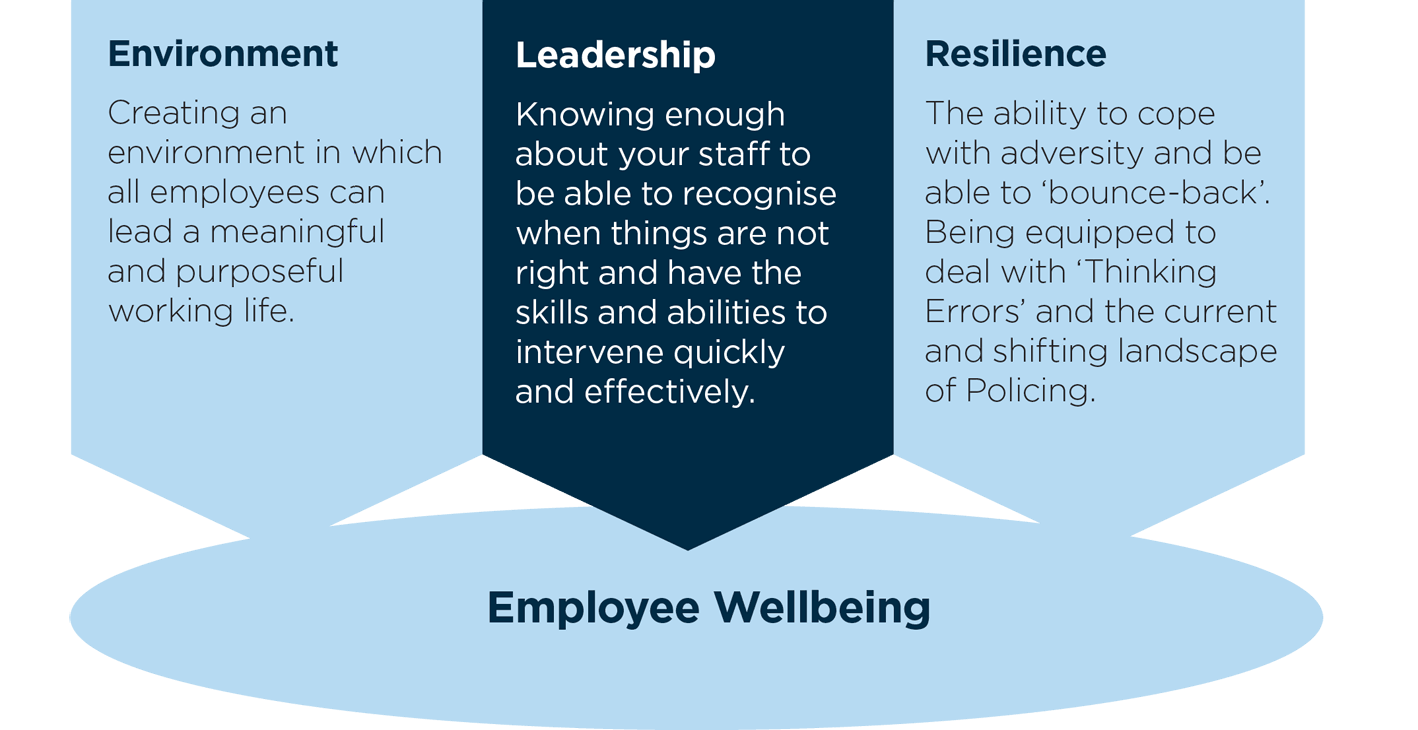
Robertson Cooper was founded in 1999 by Professors Cary Cooper and Ivan Robertson, both of whom are experts in the field of psychological wellbeing. They are a research-led organisation who established a framework for integrating good wellbeing practice into the workplace. They developed their “Six Essentials” model which creates psychological wellbeing, which then leads to individual outcomes, ultimately leading to an improvement in organisational outcomes.
The Six Essentials are:
There is a module dedicated to each of these essentials in the toolkit.
When life is busy it is easy to become absorbed by just getting by. Your energy and mind are focused on completing each task and you don’t have time to think about you or wellbeing. This can lead to feeling overwhelmed, unappreciated or stressed. This tool is an opportunity to look at the important aspects of wellbeing and see the big picture.
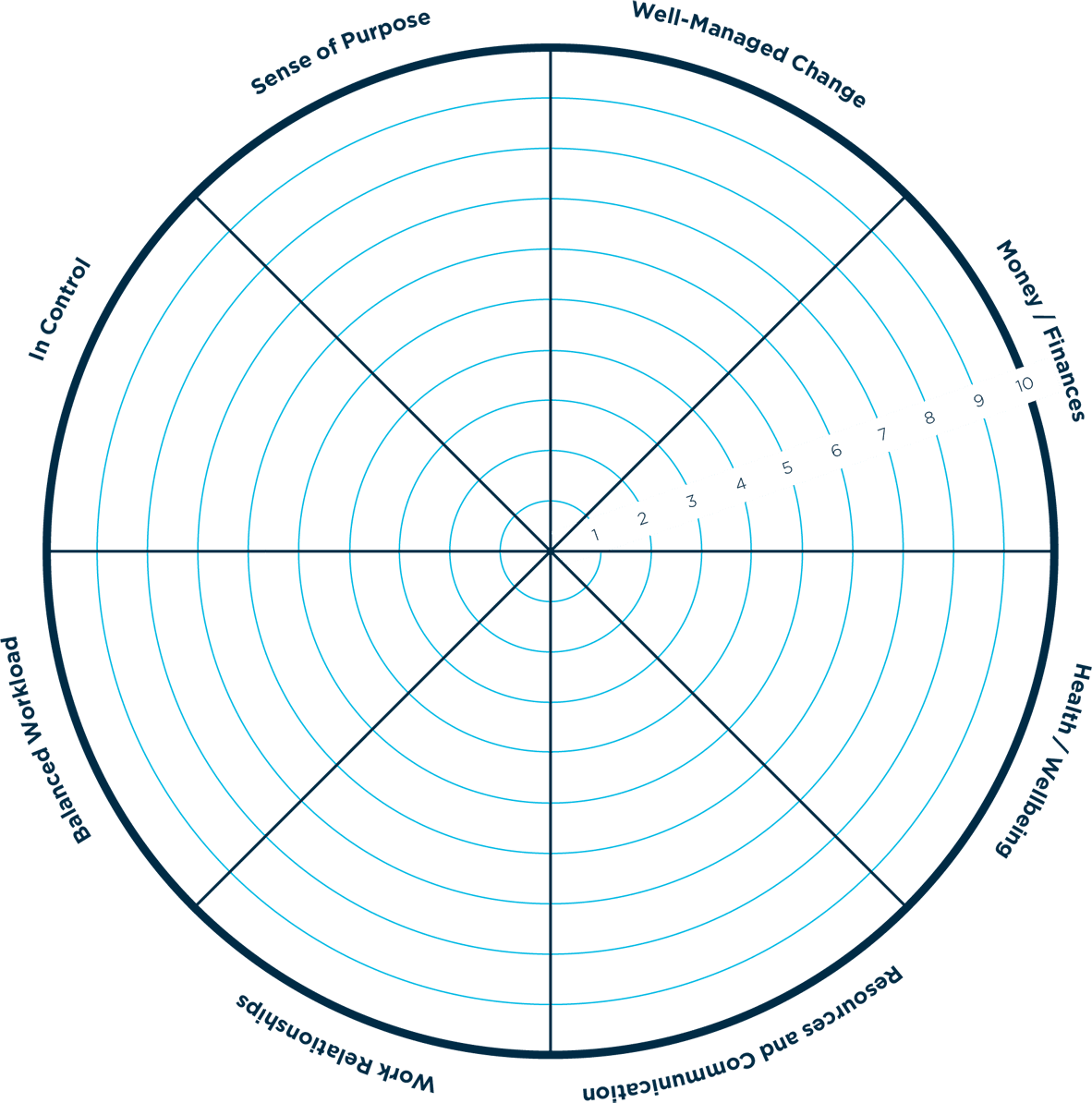
The eight sections in the wheel of life represent balance.
With the centre of the wheel as the 0 and the outer edge as 10, rank your level of satisfaction with each area by drawing a curved line (see example).
If you want, you can make up new sections, change the number of sections or change the names of the sections shown.
The new perimeter of the circle represents the wellbeing wheel. How bumpy would the ride be if this were a real wheel?
The next stage is to take action on the results. You might want to think about:
- What areas require attention and what can I do to feel better about this area?
- What is going well and what can I learn from that to help me with areas that are not going well?
- What resources are available to me?
- What do I need to stop / start / continue doing?
- Who can support me with this?
We all experience change in our lives. Sometimes change is of our own choosing. For example, if we decide to start a new career path, move house or start a family. At other times, change is imposed upon us, such as a departmental restructure or a new boss at work. Either way, the journey through the process can be unsettling. This module will look at how to handle change by keeping your perspective and accepting that it might be uncomfortable at times. You will also be able to access tools that could enable you to make life a little easier.
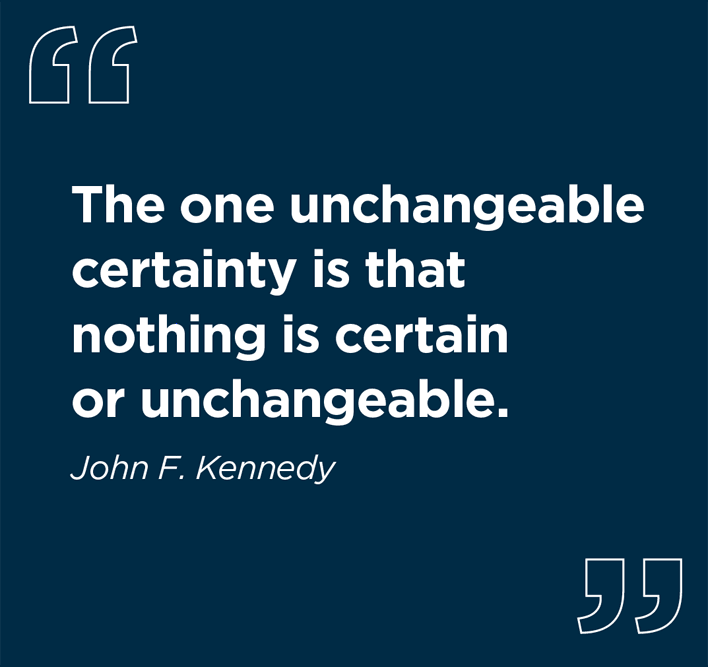
If you look back over your life you have probably already experienced some significant changes. At the time it may have felt overwhelming or difficult and yet you have come through it. When you are in the middle of change, keeping your perspective is critical.
Remember:
- You cannot expect to control every event, person, or interaction — don’t wreck yourself trying
- You cannot plan every detail and expect things to happen that way — they certainly won’t
- You cannot predict the future, you can only make informed guesses — we are all wrong sometimes
- You cannot fully understand each person’s responses to change — ever!
- It is difficult to fully understand your own response to change
- You cannot fully understand the complex social systems of a workplace — the unexpected will usually happen
- What’s the worst that can happen if...?
The change curve was developed from the work of Dr. Elisabeth Kübler-Ross, who pioneered methods in the support and counselling of personal trauma, grief and grieving, associated with death and dying. She also dramatically improved the understanding and practices in relation to bereavement and hospice care. It was realised that many of life’s big events, such as redundancy or divorce, create the same emotional responses as bereavement. As events unfold we naturally go through a number of stages (or transitions) until we are ready to accept the new world. The change curve looks like this:
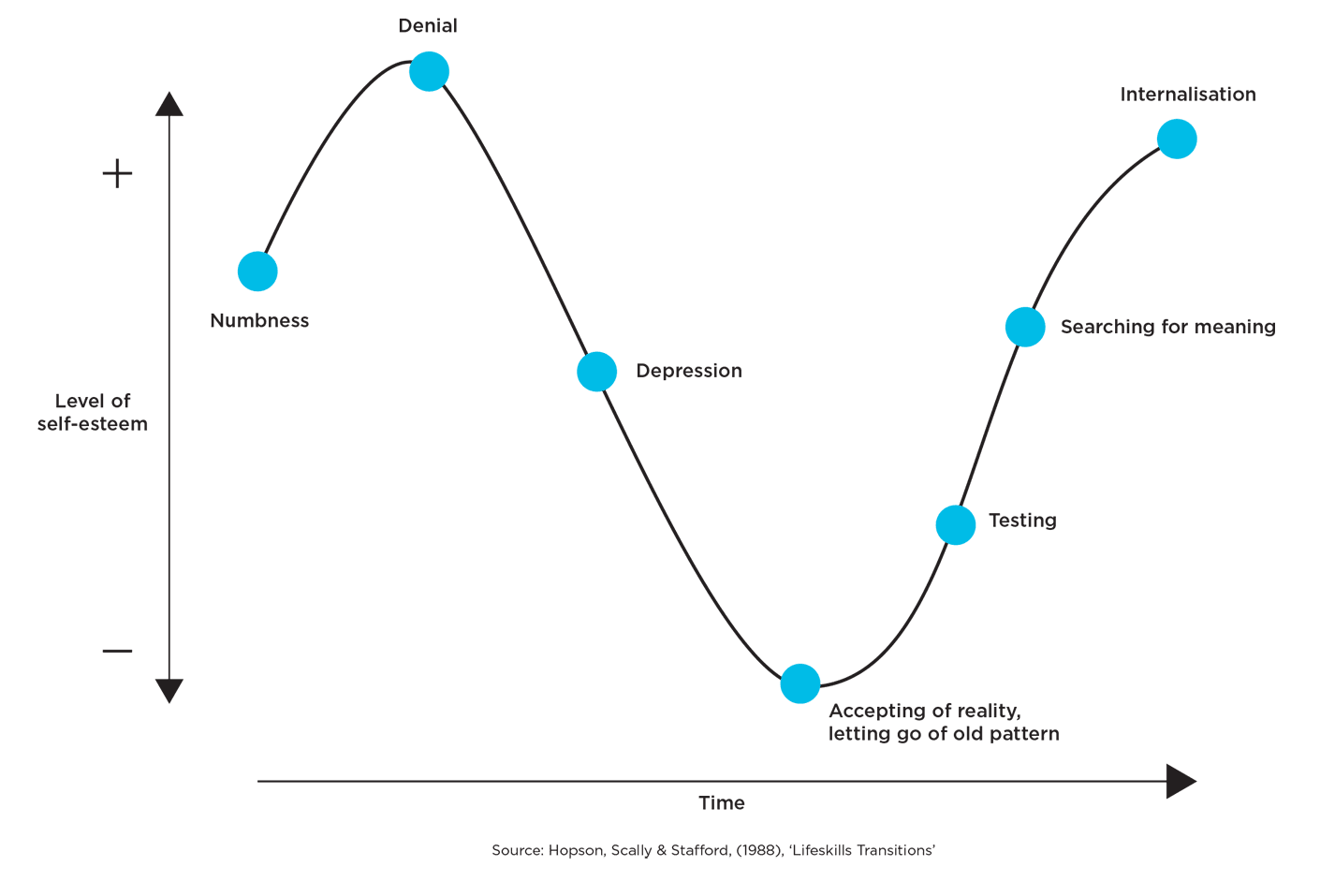

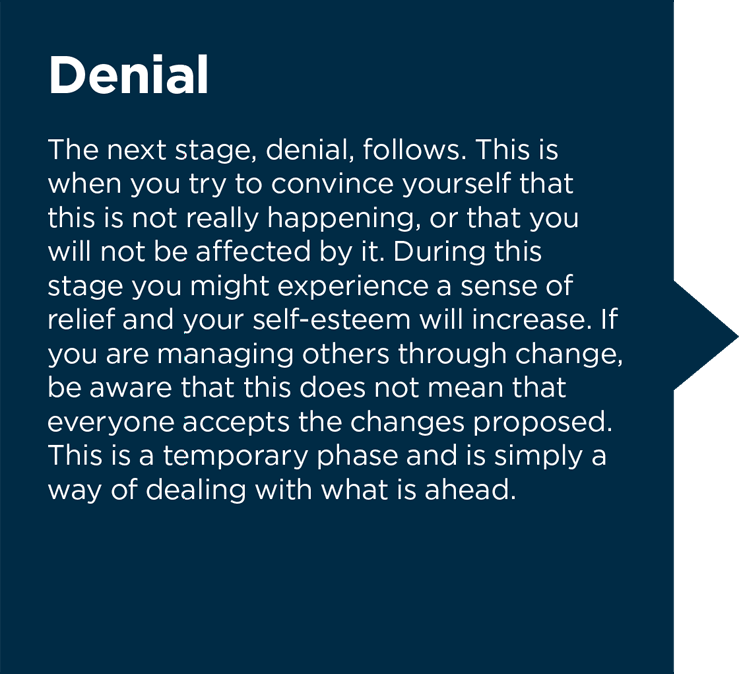
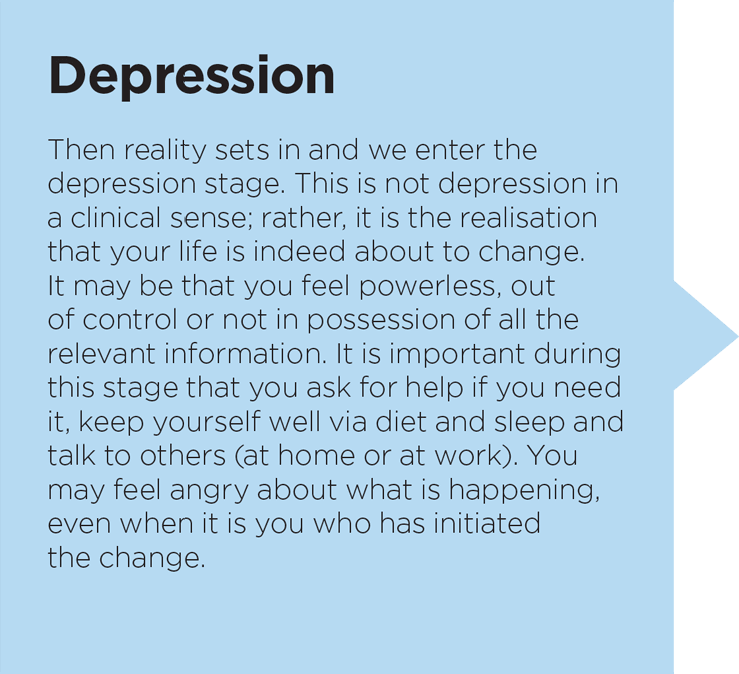
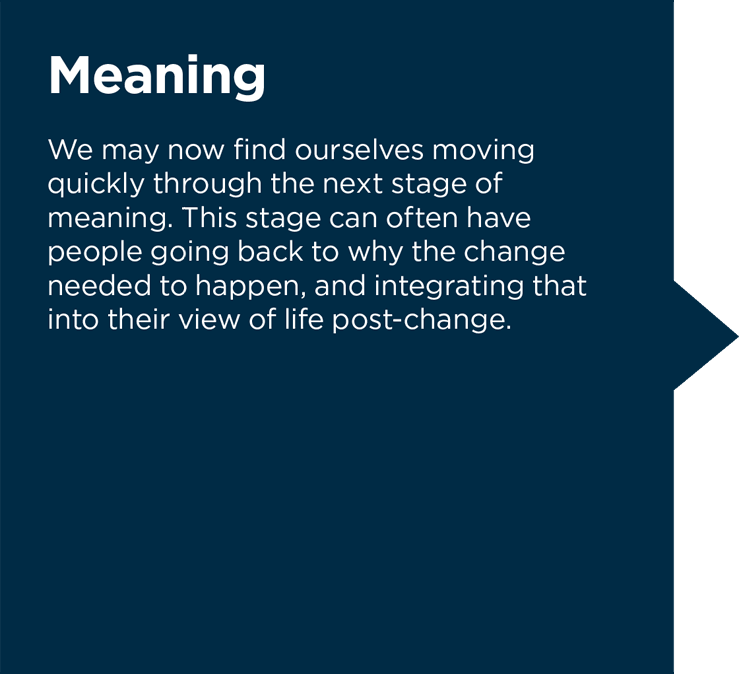
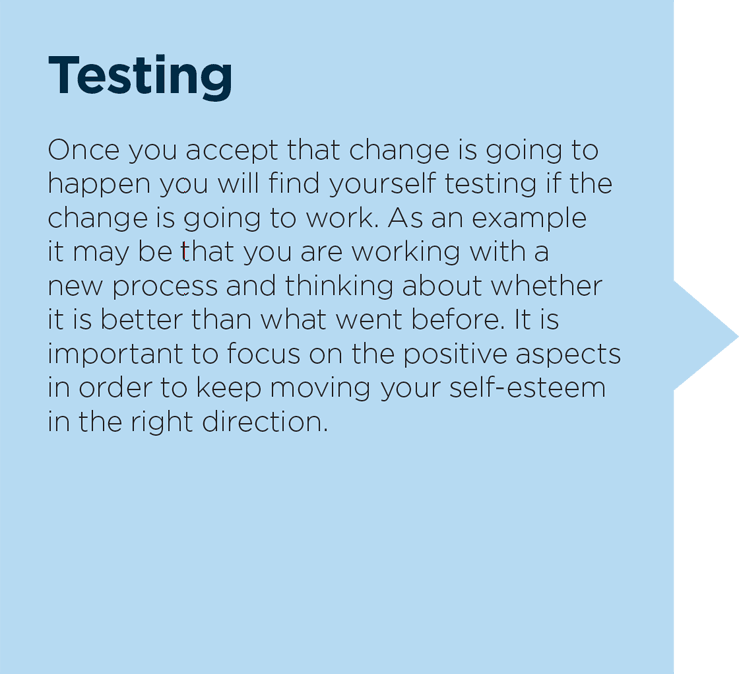
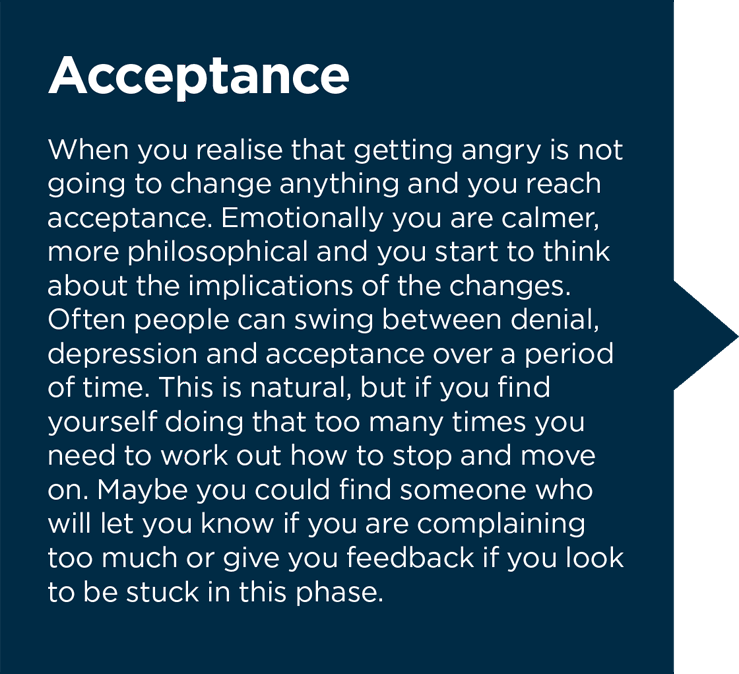
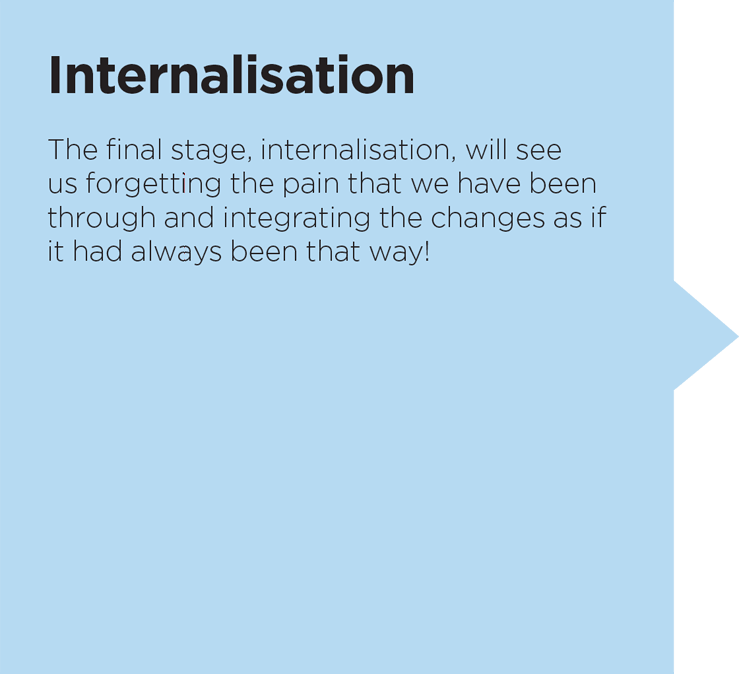
An awareness of this process may help you as you experience change. However, sometimes we all need additional support. There are no clear-cut timescales for this; people proceed through the stages at a different rate depending on how it impacts them and their resilience.
Asking for help is not a sign of weakness; rather, it is an acknowledgement of your own reactions. Speak to someone who can help you. Change does not have to be painful or difficult, and you often control more than you realise.
There are lots of reasons that can make change feel difficult. When we are at work we can blame poor management or a lack of communication. However, sometimes the reason change fails can lie closer to home. These include:
- Fears — I might lose my job
- Confusion — I want to stay in my comfort zone
- Flight — It's better somewhere else
- Lack of skill — I won't be able to keep up
- Not enough incentive — What’s in it for me?
- Resentment — What’s wrong with the way we do it now?
- Difficulty — This is much more difficult
- Lack of honesty
- Poor clarity
- Ineffective leadership
- Lack of self-awareness
Do any of these sound familiar? Indeed, are any of them a recurring pattern? If so, think about how you can get yourself out of the pattern. Perhaps there is someone who can support you in the workplace, say your boss or a friend. If these negative thoughts start to feel overwhelming, get some support as soon as possible.
When change is thrust upon us, it is natural to resist it. Usually the underlying reason for this is a fear. Here are some examples:
We avoid taking risks and settle for less in order to avoid the pain of failing. When we have no choice we may feel trapped into having to take risks and do new things which can lead to feelings of anger, bitterness and confusion.
Some of us carry a belief, “If it ain't broke don’t fix it”. That way we can stick with what is familiar rather than having to try new things. We need to know the future before going forward.
We cannot tolerate disorder, confusion or ambiguity. We dislike complexity. We have an excessive need for order and symmetry.
We give up too soon when faced with obstacles. We try to avoid the pain or discomfort that is often associated with change.
We have helped to create the present, and have too high a stake in it to think that there can be a better future.
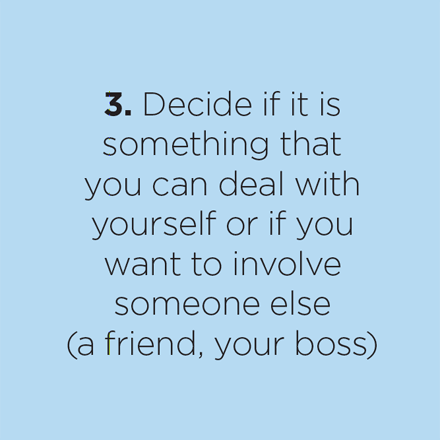
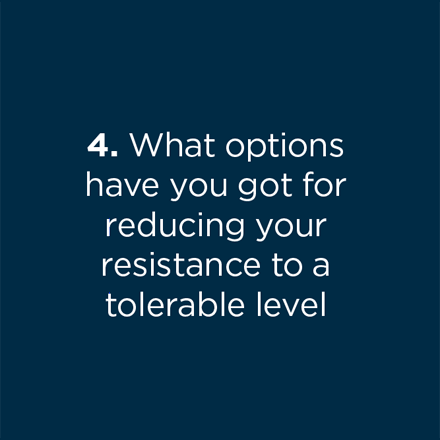
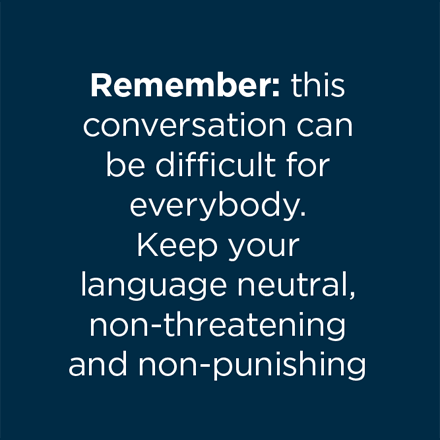
Change comes in different shapes and sizes, and we can assess the type of change based on the magnitude and timescale. When an organisation wants to make small-scale changes quickly this is “Tinkering”.
This level of change often comes as a follow-up to a larger change programme as further refinements are made to the original plan. For those affected, the impact is manageable and it does not involve significant personal changes.
When small-scale change is stretched over a longer time period, this is known as “Incremental” change and is often absorbed as part of day-to-day life. It is only when looking back that the scale of the change will be noticed. Often organisations want large-scale change as quickly as possible. This is known as “Quick fix”. This can often be as a result of a crisis. For those affected this can be challenging as a lot happens very quickly. There is often little time to think or reflect and it can be tiring for all.
Finally, some organisations seek large-scale change over a long period, often years. This is known as “Transformational” change. This is the type of change that most Police Forces are experiencing as they are meeting funding and Policing challenges. A pattern emerges of functions being reviewed, changed and then reviewed again. Those affected can initially feel unsettled, but as the years progress come to accept this as a way of life.
As you think about your Force, what type of change are you experiencing? How can you deal with that in a way that keeps you healthy and positive?
Humans have the capacity to react differently to the same situation. Our reaction is based on our interpretation of the change and whether we are predisposed to see change positively or negatively. There is no right or wrong in our initial reactions. Some people thrive on ambiguity and always see change as an opportunity to improve their current situation. Others feel threatened by change.
When you are first told that something is changing, especially something as important as your job role, you may find it hard to take in all the information. You may feel confused or overwhelmed the first time you hear it. Don't worry about that, as you should be given opportunities to check your understanding.
After a formal briefing some people will want to “talk it through” with their colleagues; others may wish to digest the information quietly as they "think it through". Make sure you find a way of dealing with the information in a way that works for you. If you are not yet ready to discuss it, let others know. Being pushed into discussing something before you are ready can only add to the stress.
When considering your own reaction to change, think of two aspects:
- Do I know what is changing?
- Do I fully understand the need for change?
If you do not have the answers to these questions, then it is unlikely that you will be comfortable with the proposed changes. Often, the detail of a review emerges some time after the review itself has been announced. If you are not clear on what is going to change you may find yourself clinging on to your current routine, or over-playing the benefits of your current situation. It is natural to feel unsettled by this; after all, work is important and it affects your home life too. In order to ease this, check that you have all the information that is available to you. It is tempting to start to listen to rumours or gossip. This won’t help. Keep establishing the facts and set aside rumours and assumptions.
If you are not clear on the need for change then you may feel angry that you are being put through this uncertainty without good reason. Ask your Manager to explain why the changes are going ahead. Don’t be afraid to ask even if you have already attended a briefing, as your Manager will want you to fully understand too. You might want to follow up on what you are told by doing your own research, so that you can establish your own understanding of the need for change.
There is a lot of literature on how to manage change. The truth is it is rarely easy. However, what is consistent in all the literature is that the following should be in place:
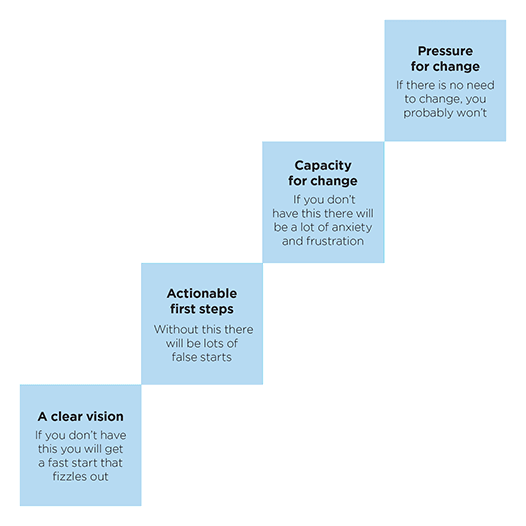
If you are managing a team through change you will need to check that these steps are in place or you are unlikely to succeed.
If you are struggling to come to terms with a change in your area of work you may feel that you are losing your perspective. You may find it easier to draw out the thoughts that are troubling you.
Start by writing down why this change is taking place, including identifying the objective, goal and target of the review.
Next, identify all the driving forces for that change. What are the aspects that make this a good idea? Are some aspects more important than others? When you have identified this, draw an arrow under each aspect, and draw the length of the arrow to represent its importance.
For example, arrows like this:Once you have done this, think about all the factors that are making you resist the change. Again, rank them in importance and draw arrows to represent your thoughts. This time, the arrows should go in the opposite direction, like this:
Now focus on the resisting forces. Which ones can you do something about? Don’t think you have to deal with the biggest ones first. By removing a minor resisting force you will change the equilibrium and move towards the goal and vision. Your final version may look like this:
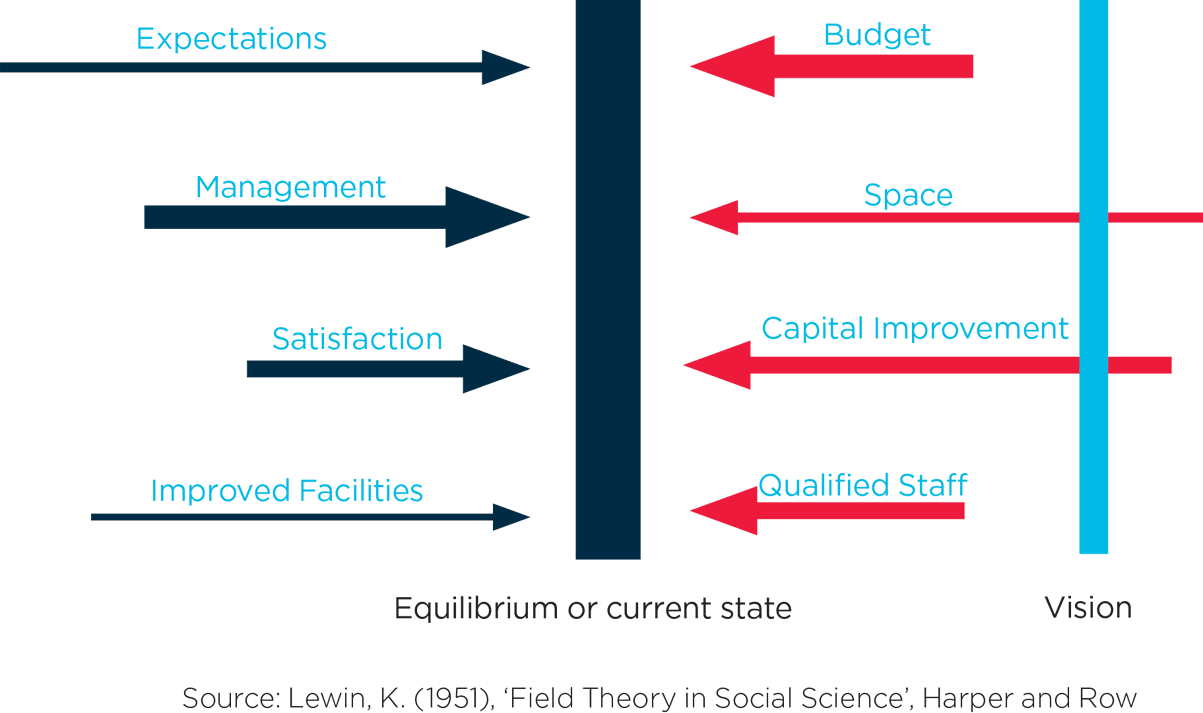
As you eradicate one resisting force move on to the next one until you have dealt with everything that is within your control.
When change is imposed (as it often is at work) we can easily feel like there is nothing we can do to influence it. That is rarely the case. When reflecting on this, consider these four aspects:
- What is affecting us that we cannot control at all? A good example of this would be worrying about the weather when you are hosting a barbecue
- What can we influence? Notice that this is about what we can influence. Well-Managed Change will give you and your colleagues an opportunity to share your thoughts. Constabularies want to get this right, so it is worth giving some thought as to what you can influence and, just as importantly, how you will do this
- What can I influence with help? It may be that you would like to have an input, but need support from others (outside your team)
- What can I do? Unsurprisingly, people can sometimes focus on what they can’t do. Give yourself some time to think instead about what you can do. You’re your own person, so with that in mind look at what your options are for embracing change
This module will look at how well we communicate with others. There is an exercise that you can do with your team, to see how well communication is working at that level. There is also information on listening skills: something that we do every day, but is so difficult to do well.
From the work of Albert Mehrabian (currently Professor Emeritus of Psychology, UCLA), it was established that there were three key elements to face-to-face interpersonal communication, and that they “mattered” in different proportions depending on how they were used:
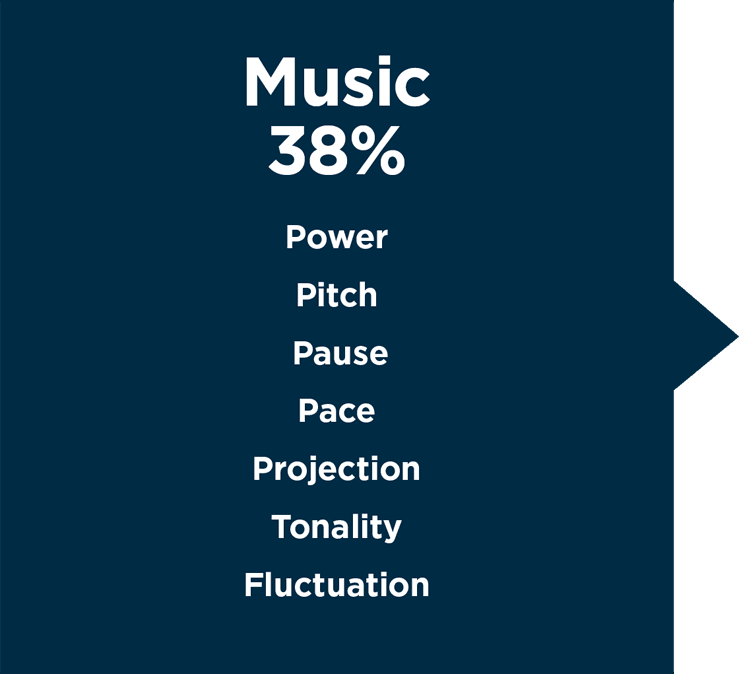

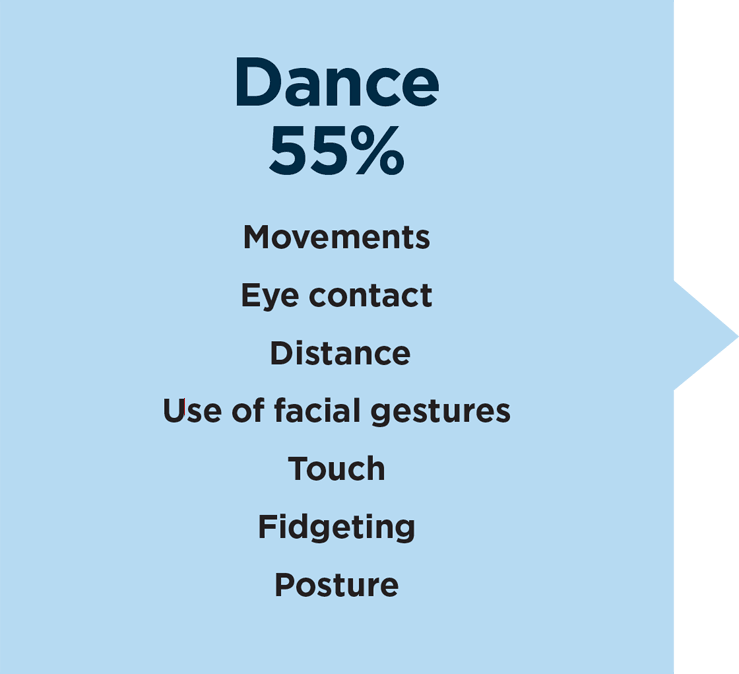
For effective and meaningful communication, these three elements of the delivery need to support each other in meaning – they have to be “congruent”. In case of any “incongruency”, the receiver might get a very different message from that intended, for example:
- Verbal: “I do not have a problem with you!”
- Non-verbal: person avoids eye contact, looks anxious, has closed body language…
This is a huge and fascinating topic, and further reading can be found in Mehrabian’s book Silent Messages. Well-honed interpersonal skills show genuine congruence at all times.
In considering your effectiveness, it can be helpful to consider two aspects of your interactions. Firstly your INTENT – the results you intend to achieve or the message you wish to communicate; and secondly the IMPACT – how your behaviour is actually received by the other person. Differences between impact and intent are often found when the words, music and dance are not “congruent” (not all carrying the same message “in concert” with each other).
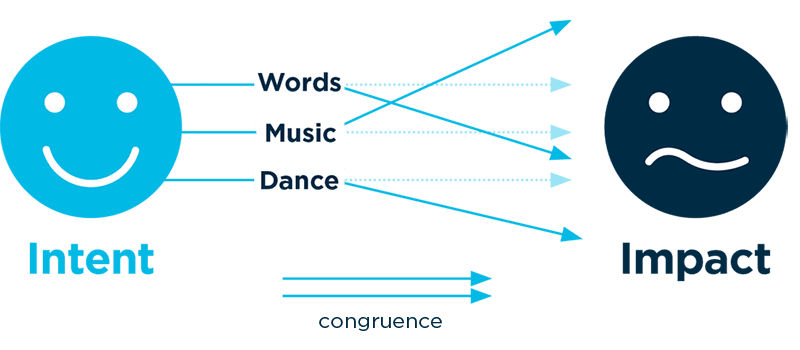
Most of our working life is spent as part of a team. This can be a highly-rewarding experience if the team works well, particularly around the area of communication. However, there are some pitfalls to team performance that can create dissatisfaction for everyone, and which impact the performance of the team. A common trigger for stress can be relationships within a team.
This is a self-assessment exercise and ideally each team member should complete the audit at the same time. Before you start, everyone involved should know which team is being considered.

The Oxford English Dictionary (1964) defines listening as “make an effort to hear something, hear a person speaking with attention, give ear to…”
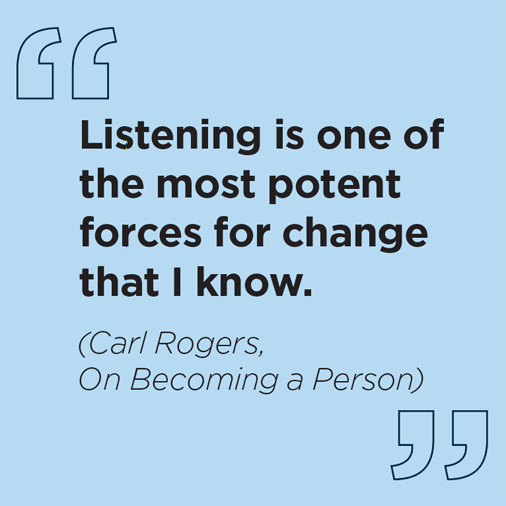
On the face of it, the skill of listening should be straightforward; after all it is something that we do every day. However, the reality is that being listened to is a striking experience because it is so rare. In a conversation the listener typically stops listening at some point as they prepare to contribute to the conversation, or as they assess what they are hearing against their own values, stories or beliefs. This causes us to listen at a superficial level and can lead to misunderstandings and assumptions that say more about the listener than the speaker.
In Swift to Hear (1985), Michael Jacobs has produced some guidelines for listening:
- Listen with undivided attention, without interrupting
- Remember what has been said, including the details (the more you listen and the less you say, the better your memory)
- Listen to the “bass line” – what is not openly said, but possibly is being felt
- Watch for non-verbal clues to help you understand feelings
- Listen to yourself, how you might feel in a described situation, as a way of further understanding – empathy
- Try to tolerate pauses and silences that are a little longer than is usual in conversations (and avoid asking lots of questions to break silences)
- Help yourself and the other to feel comfortable and relaxed with each other; keep calm even when you don’t feel calm
(Reference: Jacobs, M. (1985) Swift to Hear, SPCK.)
In coaching literature, where listening is a fundamental skill, there are references to three levels of listening. The first level of listening will be familiar; it is what we do every day. However, levels 2 and 3 are where the real breakthroughs take place.
At Level 1 the attention is you. Whilst you might listen to the words of the other person the focus is on yourself and what it means to you. In some scenarios this is entirely appropriate, for example whilst shopping in a supermarket and deciding what you need to buy. Many conversations with friends and family operate in this way. In the workplace these conversations are also common, but often inappropriately so. When someone is listening to you at this level, you know that you have not got their undivided attention. You see it in their facial expression or in their desire to say their bit.
At level 2 you are working together in an absorbing and intensely concentrated conversation. The conversation will flow with the other person doing most of the talking. You can see a conversation taking place at this level as the two people are likely to be leaning forward, looking intently at each other. Often they are oblivious to the outside world. As the listener, your attention is completely directed at your colleague, listening for words, their expression, their emotion, in fact everything that they bring into the conversation. You notice both what they say and what they don’t say. At this level you notice the energy levels of your colleague and you are completely unattached to yourself. If you start to hear your internal voice, formulating the next question, or quietly agreeing with what you are hearing, then you have reverted back to level 1 listening.
Level 3 includes everything you can observe with your senses: what you see, hear, smell, and feel – the tactile sensations as well as the emotional sensations. Listening at this level opens up access to your intuition. As you receive signals beyond the words, you use the information to respond to your colleague. At this level you pick up subtle shifts in body language that can be as informative as the words that you are hearing. Many people resist listening deeply simply because it looks like you are not doing anything. There is a temptation to finish your colleague’s sentences to demonstrate how engaged you are in what they are saying. However, it has the opposite effect. Instead of creating engagement you simply close down your colleague’s ability to think and be creative.
Imagine your colleague asks for a quick chat. Below is a conversation in which you are invited to take part. Imagine how you would respond to your colleague and make a note of it. Be aware of any internal voices that may start before you have finished “hearing” your colleague out.
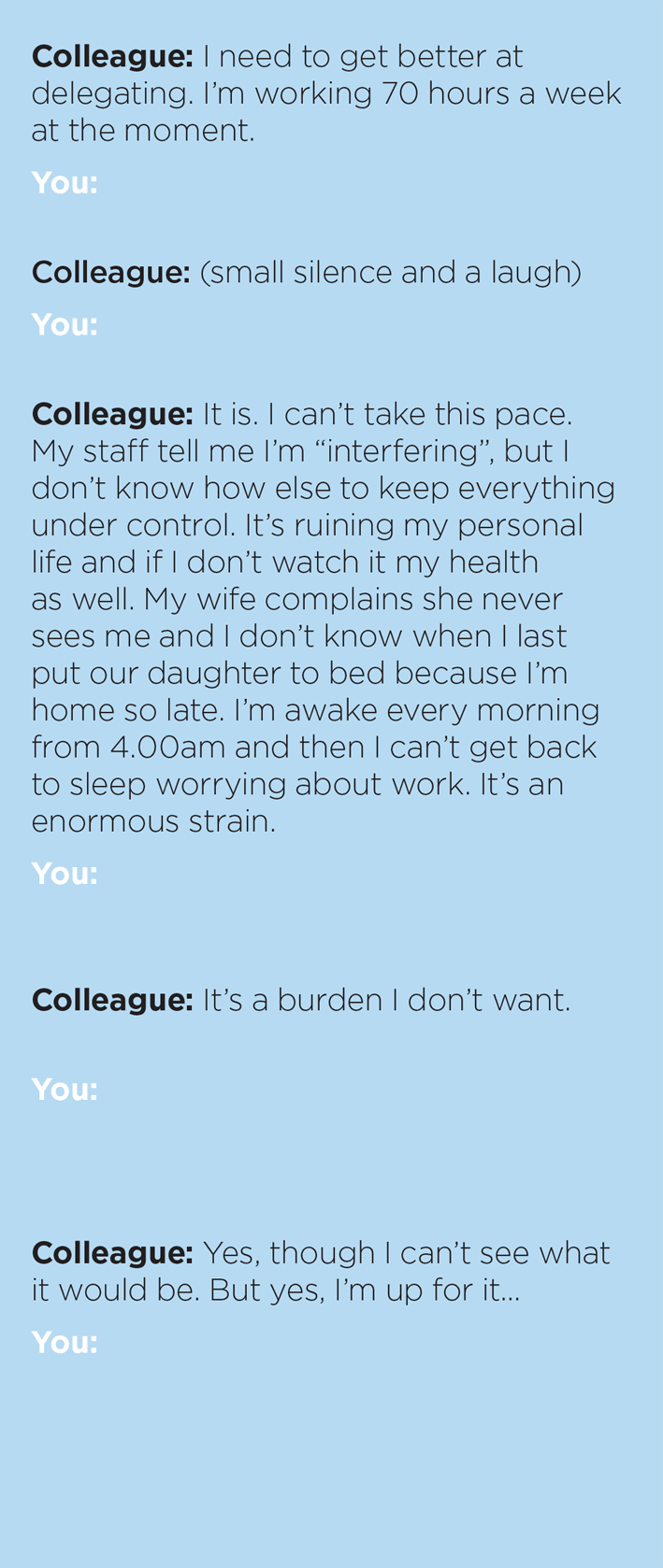
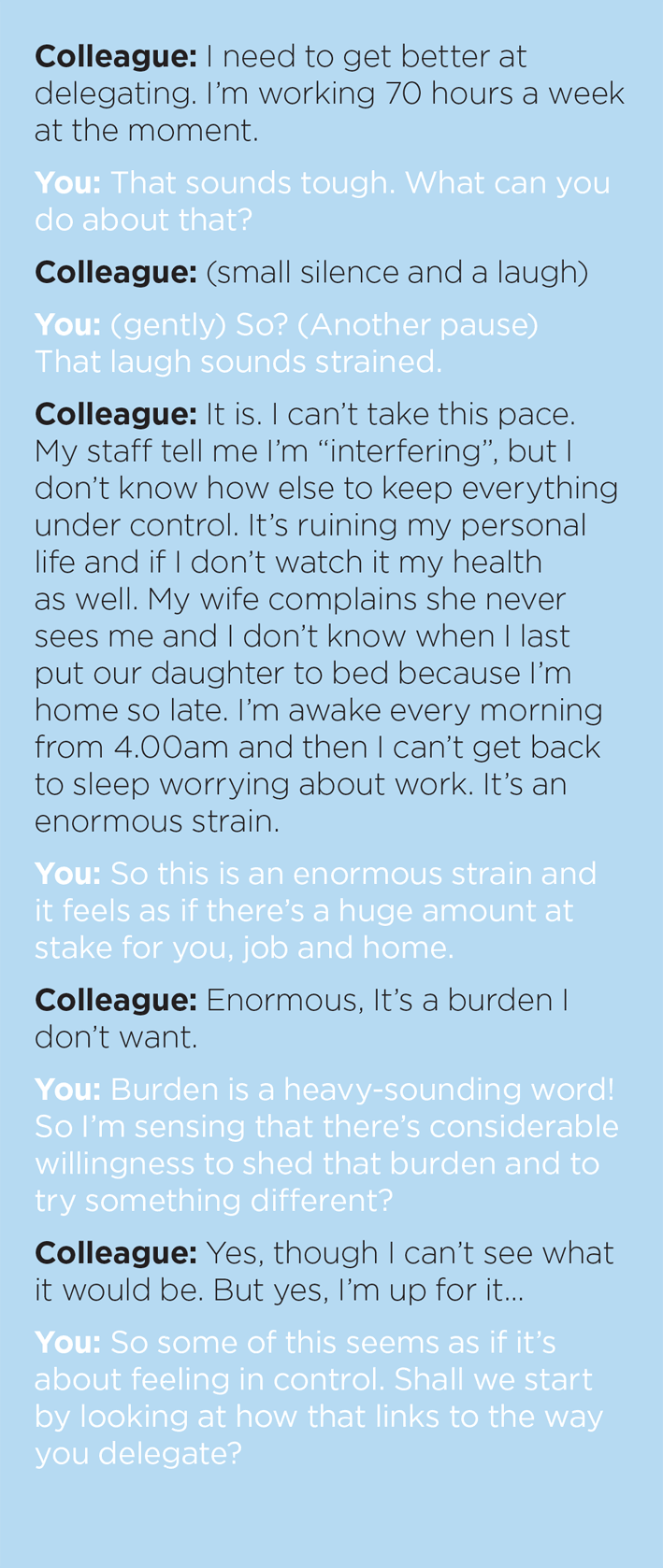
For this activity you will need a colleague, family member or friend. This activity is split into three sessions in which you are going to practise each of the three levels of listening.
To undertake this activity you will need a space for yourself and your volunteer which is quiet and where you will not be disturbed. You may complete the three listening exercises in one session or break them down into several sessions.
Ask your volunteer to talk for about 5-10 minutes about a recent holiday or what they did over the weekend. When they are talking imagine yourself as a tape recorder – you are paying attention to what they are saying and to the context of what is being said.
At an appropriate point in the conversation or at the end of the session, paraphrase back to your volunteer what they have been saying.
Some useful guidelines on paraphrasing:
- Use your own words – don’t mirror
- If you lose the thread of what is being said say so – don’t pretend that you know what is going on
- After paraphrasing, look for signs that you have been accurate or ask the client directly
As with the level 1 listening activity, ask your volunteer to talk to you for about 10 minutes. This time ask them to talk about an issue or problem that is troubling them.
This time when the volunteer is talking, imagine your role is to act as a filter, drawing out and summarising the important elements of what they are talking about.
Listen to the content and try to summarise to the person what they are really trying to say, and identify the real meaning.
Ask your volunteer to talk for about 10-15 minutes about an issue or problem that is troubling them. This time when they are talking try to focus on body language and tone. Also be curious about what is not being said. With this data you are trying to home in on your volunteer’s emotional state of mind / condition.
At the end of each activity reflect upon the experience and discuss with your volunteer their view of the experience.
Our relationships at work are an essential part of how happy we are with our job. We come across a wide range of people, some of whom we will get on with, and some of whom we won’t.
When you think about your work relationships, it might be worth thinking about them at these different levels to help you understand which are working well and which are not. Our relationships can be viewed at three levels:
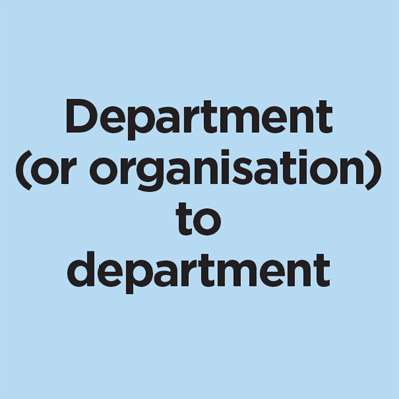
Work relationships can cover a variety of descriptions including:
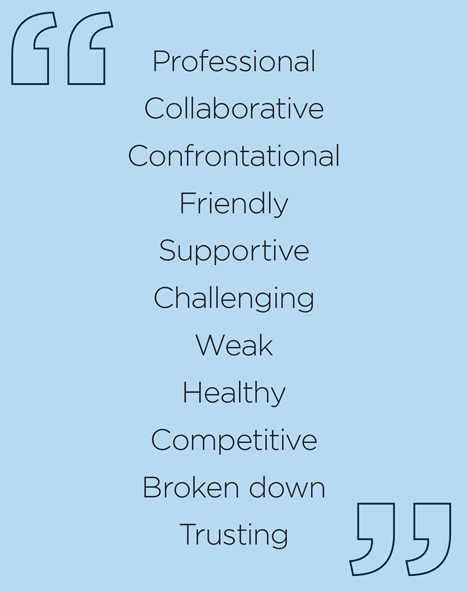
Research by Robertson Cooper suggests that Collaborative Relationships most contribute to our wellbeing at work. The Collins English Dictionary defines Collaboration as “working with each other to do a task and to achieve shared goals”. Typically this means that the relationship is based on the sharing of information and respect for the other person. It does not mean getting your own way every time. It is also a step beyond mere co-operation due to the commitment involved in achieving shared goals. The types of behaviours that tell you a relationship is collaborative include:
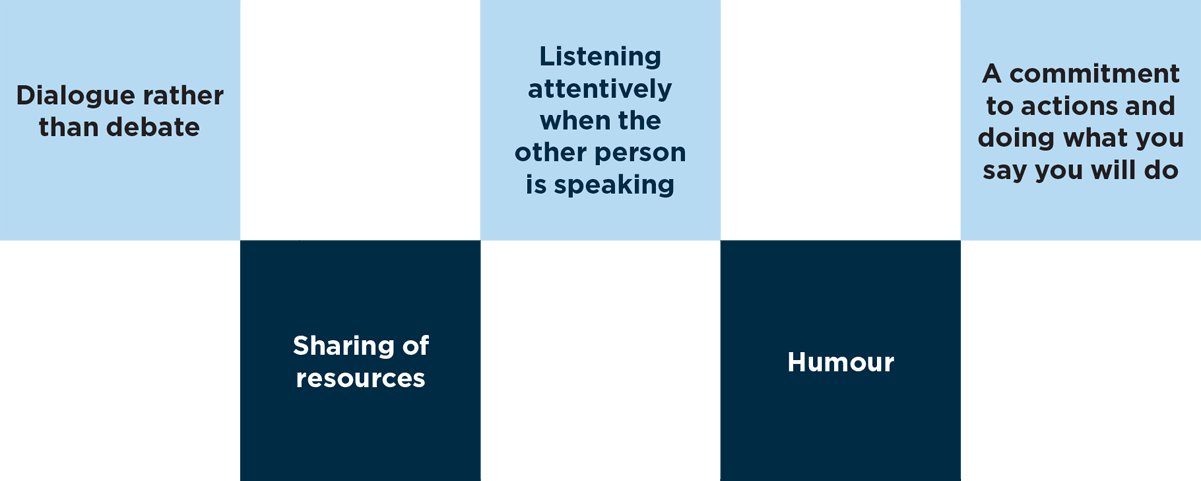
Later in this module you will find a tool that will help you to analyse your work relationships. In the meantime start to reflect on your best and worst relationships during your career.
What made them so good / bad? What part did you play in defining that relationship? As you explore this it is worth remembering that you cannot change other people; you can only change yourself. What is the smallest thing that you can do that will make the biggest difference in moving an existing relationship to a collaborative one?
We experience the world of external events through our senses. We become aware of an event as we experience information that comes in through our sensory input channels: the channels of seeing, hearing, touching (and “gut feeling”), smelling and tasting. Each external event of which we are aware is filtered by unconscious highly reliable processes that delete, distort and generalise the information coming in through our five-sensory channels.
When two people are exposed to information, why do they not have the same experience of it? The answer begins with, “That’s because they delete, distort and generalise the information from the outside in different ways.” We delete, distort and generalise the information presented to our senses by using, unconsciously and consciously, certain internal processing filters:
The logic bubble can be used as the framework for a relatively simple, but potentially powerful, analysis which explores why someone may choose (consciously or unconsciously) to behave in particular ways. Such an analysis must be focused on a specific and clearly described behaviour or set of behaviours under specific circumstances. While technically possible to do a logic analysis which encompasses their entire life, it would require whole books to capture the total fund of experience, knowledge, etc. that informed all of their behaviours under all circumstances.
The steps to performing a logic analysis are:
- Step 1 - Identify the behaviours the person uses that you find it difficult to understand or predict
- Step 2 - If these behaviours are related to specific situations or circumstances, identify these
- Step 3 - Brainstorm what that person may know (or believe) that could lead them to choose those particular behaviours. These will be specific knowledge statements (“they know they could do my job better than I do”) rather than broad statements of general knowledge (“they have a degree in engineering”)
- Step 4 - Likewise, look at what experiences they may have had that might lead to them to behave as they do. Again, be specific and be clear what the connection between the experience and the behaviour might be
- Step 5 - Look at their values. Be specific about the link between the values you refer to and the behaviour you are seeking to understand
- Step 6 - Look at what their aspirations may be, linking those aspirations to the behaviour
Through observation of the individual’s behaviour, through researching their background, through listening to them talk; this analysis was the best guess as to what is going on in their head. The next step is to test that hypothesis. You can do that through conversation, through responding to them in certain ways. If we are right, they should respond positively. That confirmation of our assumptions suggests we continue with this hypothesis. If they don’t respond as we hoped, then we have new data on which to reflect in order to modify our assumptions and update the Logic Analysis.
Source: (Logic Bubble)… De Bono, E. (1982), De Bono’s Thinking Course, BBC
This technique is aimed at helping you “picture” your own network, or one you are observing by drawing a picture of your relationships.
It is designed to describe individual relationships but its real purpose is to go beyond this.
Through the individual relationships – try to see clusters, constraints and patterns emerging.
The mapping does not give you the final product – it is a way into thinking about your relationships. Use it as a starting point for new understandings and conversations.
- Map out your own workplace identifying key relationships within the Police and with other stakeholders
- Use the symbols below to describe the relationships
- Write other information alongside the symbols if necessary
- This technique should help you explore your key relationships
- Use this map to explore constraints, challenges and successful collaborations and working relationships
- Individual relationships
- Clusters, constraints and patterns
- Groupings
- Explore the network
- In which part of the network is there the most tension?
- What does it feel like to be in a different place (or another's shoes)... put yourself there and find out!
- Where is the most possibility for change?
- Hidden treasure: what pleasantly surprises you about the network?
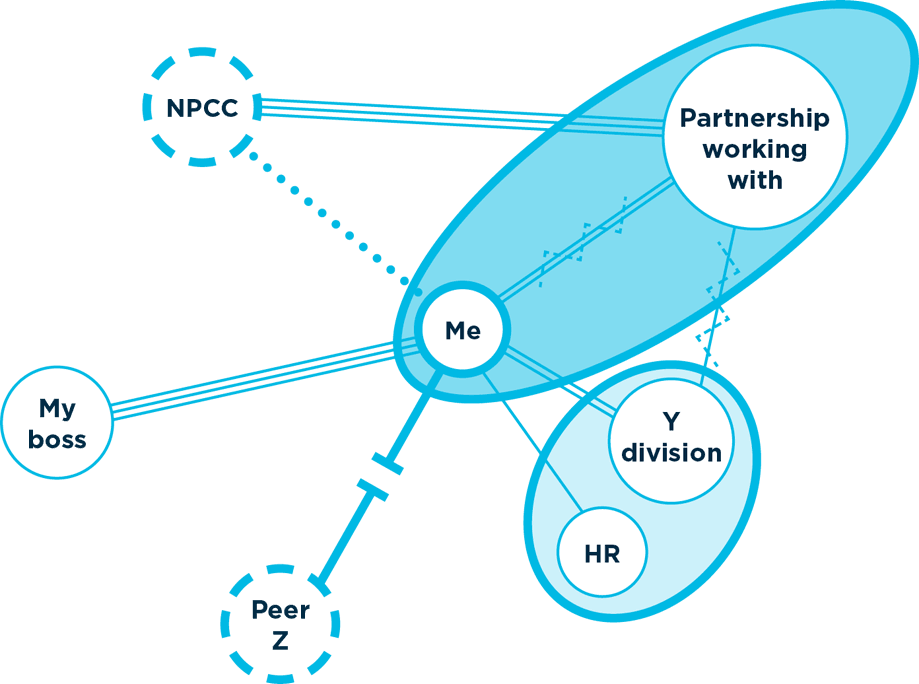
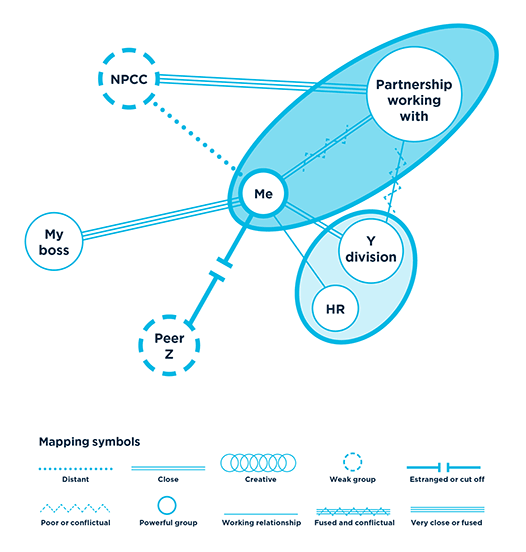
Once we have identified that a relationship is making you unhappy, the next step is to do something about it! This may require you to have a conversation with someone that could be challenging for you. This tool provides a useful framework for you to start that conversation and is taken from Susan Scott’s book Fierce Conversations. It is a Seven-Step Framework that starts the conversation in a clear way, and demonstrates that both of you are accountable for the issue to be discussed. Your opening should last 60 seconds and no more. Once you have said your piece, stay quiet and listen. Even if there is silence you need to stay quiet to allow the other person to process what you have said.
A problem named is a problem solved. Name the problem behaviour and how it impacts. If there are a number of issues what is the theme?
Be succinct – this is important for credibility.
This is deeply personal and you are letting the other person know that you are affected.
i.e. Why is this important? It might be something at stake for them, you or the team. Use the words “at stake” as this has an impact.
No long confession but an acknowledgement that you are willing to be open and vulnerable too.
Use the word resolve – this is not about getting fired. You are primarily restating the issue and it communicates good intent on your part.
There has been no dramatic confrontation or attack and you have been clear about the reality of the situation. Even if they don’t accept the invitation, they know exactly what the issue is and what is at stake.
Try writing out what you would like to say to someone using these headings. Now practice saying it aloud. This is important as it gives you an opportunity to hear the words out loud before you are in front of that other person. Remember this should last no more than 60 seconds. Once you have said your statement stay quiet and listen. It may be tempting to fill a silence, but don’t. Give the other person time to take in what you have said and to respond to it.
When you have had your conversation don’t expect a minor miracle. Changing behaviour takes time and practice. Whilst this process is ongoing, acknowledge the breakthroughs and be persistent in your desire to improve the issue.
In this module, we focus on ‘time’ – a rare commodity and something many people wish they had more of. Although we try to blame a lack of time when things go wrong, it is often a reflection of how we manage ourselves. This module has some tips on managing time, but also gives you an opportunity to explore your own internal motivation.
Time is like no other resource – it cannot be stored and is inelastic. Time is the only resource you cannot have more of. There are 24 hours in every day, and you have (and use) them all. To do something new you have to stop doing something you are already doing. Here are some tips for reviewing how you spend your time.
Efficient – doing things RIGHT (Is there a better way of doing this?)
Effective – doing the RIGHT things (Am I working on the important things?)
START with the END in MIND (Plan ahead. What do I want to achieve today?)
Know your Big Rocks! (Think of your day in terms of sand, pebbles and big rocks. If you spend most of your time working on sand you will not have room for the big rocks.)
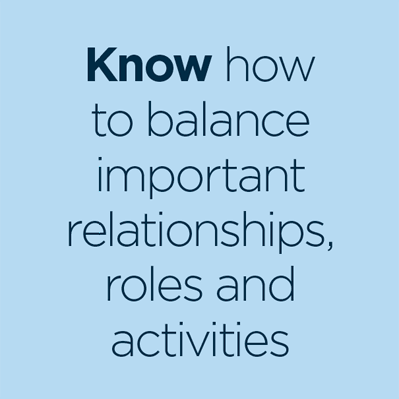
- Write a list of the 20 highest priority things you have to do
- Rank them, with number one the highest priority
- Start by tackling the item ranked as number one. Don’t move on to another item until you have completed number one
-
When number one is finished review the list:
- Add any new items that have arisen
- Renumber (one = highest priority)
- Start by tackling the item ranked as number one
- When number one is finished, review the list, etc
Think about your tasks for the day in terms of urgency and importance. We often find ourselves working on tasks that are urgent, but not necessarily important. It is a hard cycle to break, especially as deadlines seem to get shorter and shorter. It is worth asking yourself from time to time: Is this the most important thing for me to work on right now? Covey created the following grid:
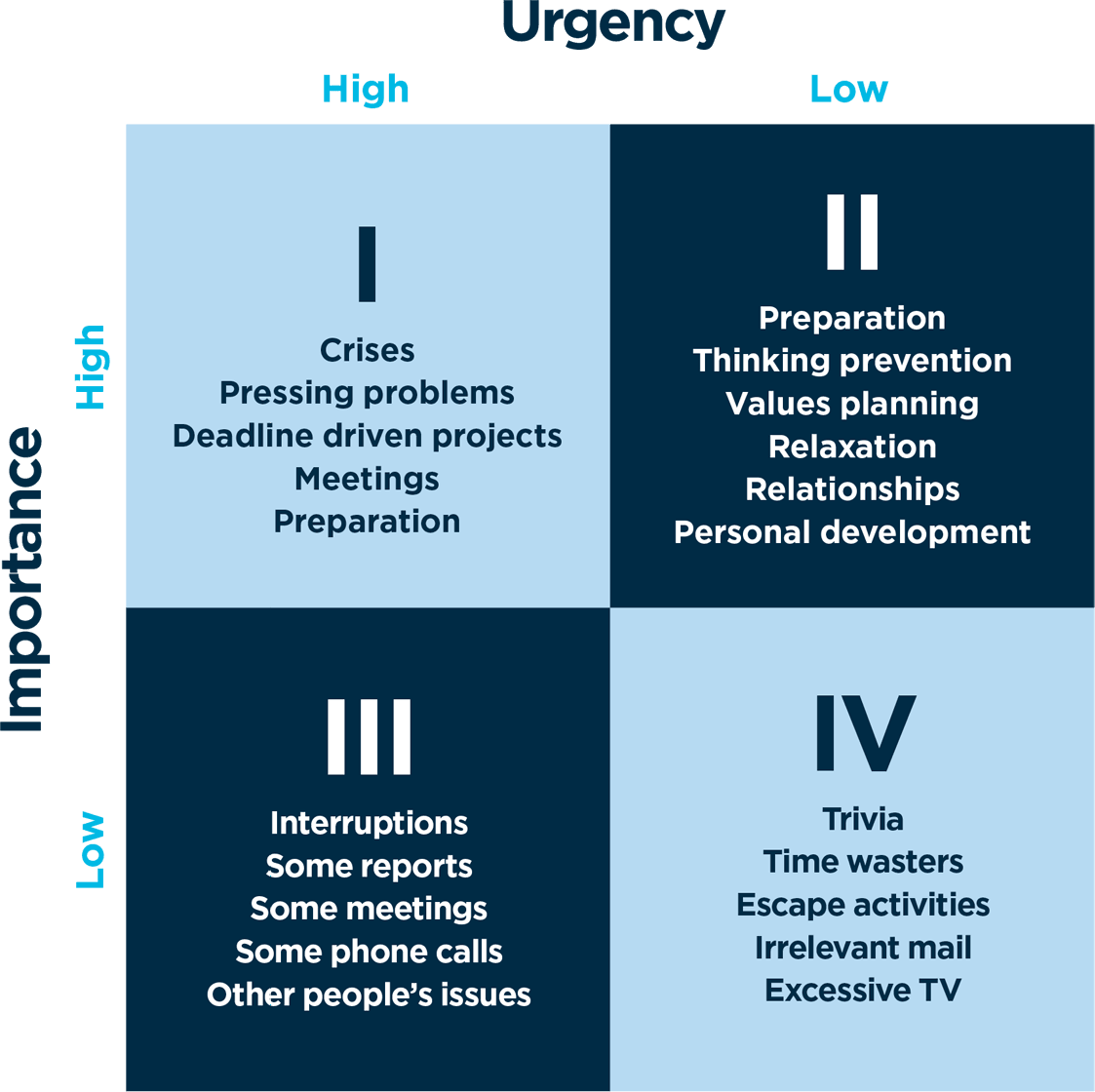
Think about your day. What percentage do you spend in each of the quadrants? How might you change this to get more out of your 24 hours tomorrow? When thinking about new approaches, be honest.
Are you the type that gets easily distracted? Do you get bored after a short time working on one thing? If so, then find a way to deal with it. Perhaps a healthy reward once a task is completed?
You may want to ask someone to challenge you if you look to be working in quadrants III or IV.
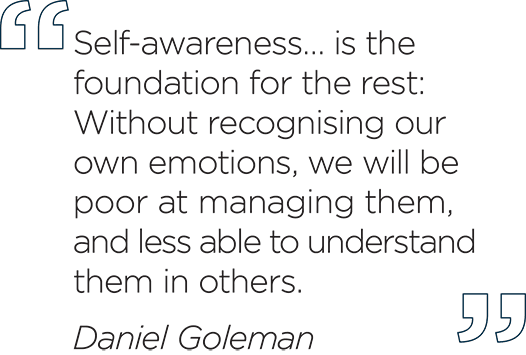
Each person carries in his / her head, consciously and unconsciously, values and standards for determining acceptable, useful ways of behaving. However, not all of them are conducive to health and wellbeing. They may instead give rise to compulsive “driven” behaviour. A very common example of this is perfectionism, which can induce a person to work to irrationally high standards thereby putting themselves under stress.
As each of us grows up our parents (and other significant adults) transmit values and standards to us in a variety of ways: instruction, modelling, or through punishments and rewards. Young children (before the age of about 10 or 11 years old) do not consider, reflect and rationally examine their experience. The intellectual ability to do this develops around puberty.
Typically adolescence is characterised by considerable amounts of reflection, testing out and selecting of personal beliefs. Nevertheless, many people have acquired beliefs from their family and community upbringing that they have not consciously stopped to re-examine in the light of their personal experience, and these beliefs are still influencing their current behaviour.
Inside are listed five clusters or categories of beliefs that were probably introduced to a child as part of the value structure of the family / community, but now include outdated or rigidified patterns called Drivers.

When a person behaves from a Driver pattern they are still “obeying a message” from their upbringing. The person may be aware that their action is “compulsive” but rationalise it, e.g. “Well, if I don’t do it, no one else will” (be strong belief). Equally possible, they simply may not be aware of the “automatic” nature of some of their behaviour. It is useful to take time out to reflect and re-examine values and standards, beliefs and habits and, on the basis of personal current experience, make appropriate changes.
Examples of such changes might be to lower one’s standards; slow down one’s lifestyle; give up trying to make a relationship “work”; ask for more help and support instead of feeling compelled to do everything oneself; or to spend more time and energy doing activities pleasing to oneself rather than doing what other people want so much of the time.
If you think about yourself, does one of the Drivers sound like you? If so, think about the disadvantages of that Driver in respect of balancing your workload and create a strategy for overcoming this. Get others involved too as you try out new approaches. They will support and encourage you.
There are many times in our life when we may feel “out of control”. This can be due to various factors including organisational changes, the threat of illness, relationship breakdowns. When we are in the middle of this we can feel overwhelmed, emotional, irrational or tired. It is important to get your perspective back and this module looks at ways of you getting back in control.
However, as a starting point consider this: If you review the situation you find yourself in, have you got clarity on what you can and can’t control? For the things that you can control, can you start to identify what you might do to shift you from where you are now to where you want to be?
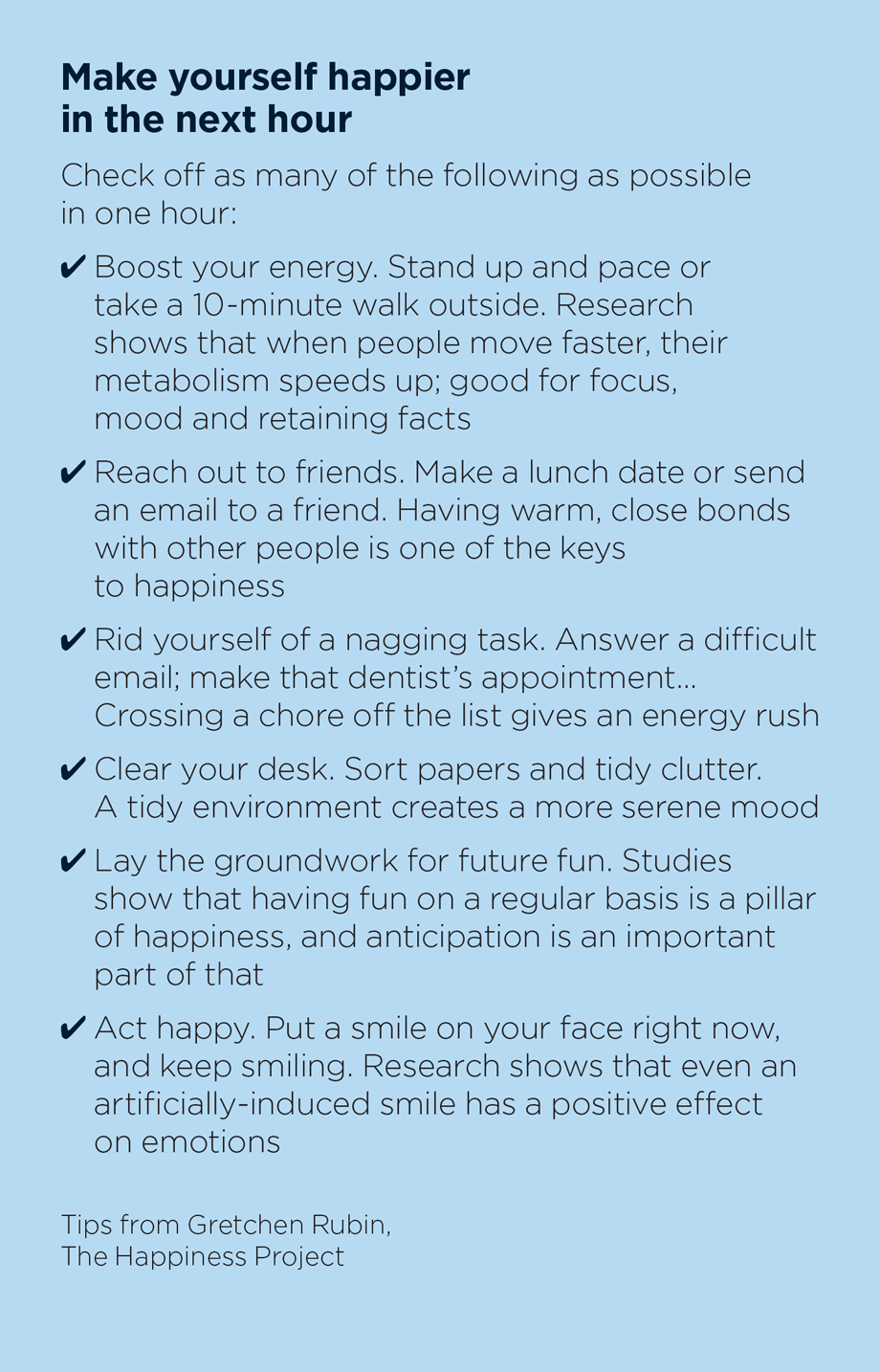
Research consistently proves that humans need positive relationships with other humans. Many of us are enjoying the benefits of modern technology that have enabled us to maintain long distance friendships. Embrace this and use it to your advantage. However, it does not and should not completely replace face-to-face contact. Busy lives often mean that we have to make some hard choices on who we see, what we do, where we go. When you are making these choices don’t underestimate the value of being with someone who shares your interests or who makes you laugh. It will take work to maintain this and commitment to keep it going.
Friendships in the workplace are important too. Research by Gallup showed that a key factor to your motivation is having a “best friend at work” (see Marcus Buckingham and Donald O. Clifton, Now, Discover your Strengths). We juggle a lot of different relationships in the workplace and find ourselves working with lots of different personalities. Although you may have a good circle of friends outside of work it is worth making an investment into creating great friendships at work too.
Occasionally our friends let us down. They forget an important event or cancel at the last minute. When they do this it is natural to feel disappointed. However, don’t be too harsh in your judgement. We can tend to attribute personality flaws in others (e.g. “they are unreliable”) when it is a specific situation that has forced them to let you down (e.g. an urgent meeting called by their boss). When we apply this logic to ourselves we would of course say that cancelling lunch doesn’t make us an unreliable person.
Moment by moment we are faced with a vast array of choices and we are required to make hundreds of decisions every day just to survive. We can often focus on the big decisions, the ones that we believe are important. However, sometimes it is the little decisions that irritate us on a daily basis that can start to impact on our wellbeing. It may be worth you giving some thought to the minutiae of your life. What daily rituals or habits end up giving you grief? Some of the stories that people tell around this are:
- Not making your bed each morning, which means that after a hard day you either get back into an unmade bed or you make it when you are too tired
- Not planning enough for the morning rush at home, when children need clothes and breakfast and the house needs a tidy up
- Opening every email you receive but not dealing with it, thereby creating a mental backlog of emails waiting for your attention
- Adding to the clutter on your desk and never quite having time to sort it out
In isolation each of these niggles will feel insignificant compared to the bigger decisions that we make. However, by taking control of these niggles you will eliminate a daily source of stress. As you work your way through each of these niggles, the cumulative effect will be significant.
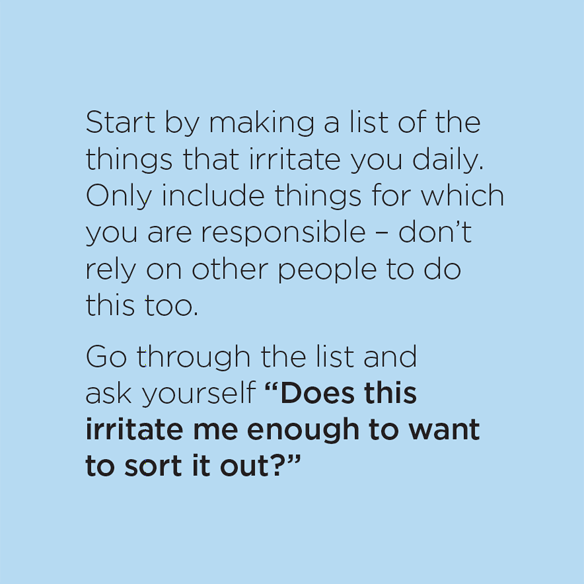

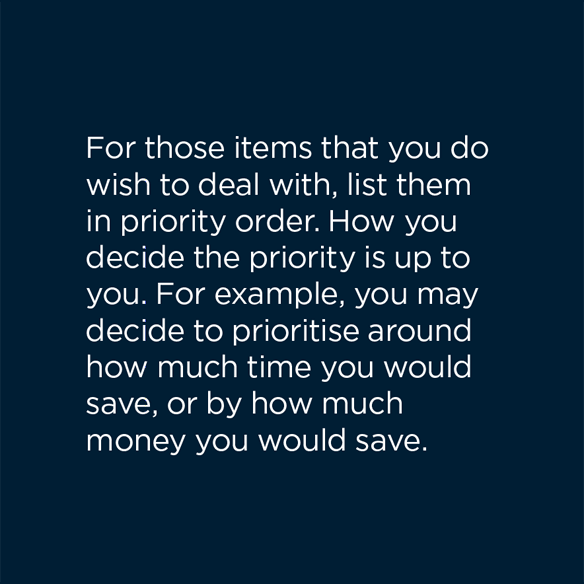
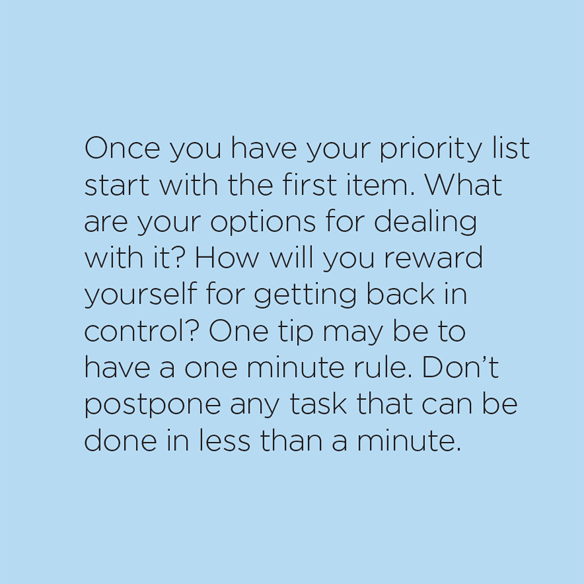
Now do it! It is likely that you will find yourself slipping from time to time. Don’t let this put you off. If you want to replace a bad habit with a good one, research suggests that it will take 68 attempts before the old habit is broken. To get you through, focus on the benefit of dealing with this niggle. Once you have this under your control, move on to the next item on your list.
One source of stress is being stuck with an issue that you can’t seem to fix. Once the downward spiral of negativity kicks in, you can guarantee that you won’t be able to think clearly about the issue. We all have ways of dealing with those moments, depending on our personality type.
Some may prefer to talk it through with a friend or colleague; others prefer to find some time alone to think it through. Your environment has a big impact on the quality of your thinking. If you are in an environment where there are lots of interruptions and noise, you are unlikely to generate high quality thoughts. Invest time in reflecting on when you are at your best:
What follows is a summary of advice given in the many articles and books written about stress. You don’t have to do all of them, just have a look and see which tips might make a difference for you today.

Edward De Bono
This is a model created by Edward De Bono. He wanted to find ways of using different perspectives to think about an issue or a process. The activity can be done individually or by a team. The starting point is to name the issue you wish to think about. Then run through the issue from the perspective of each hat. You may wish to capture what comes out of this. At the end of the process, review the perspectives and look at what new insights emerge.
The hats are as follows:
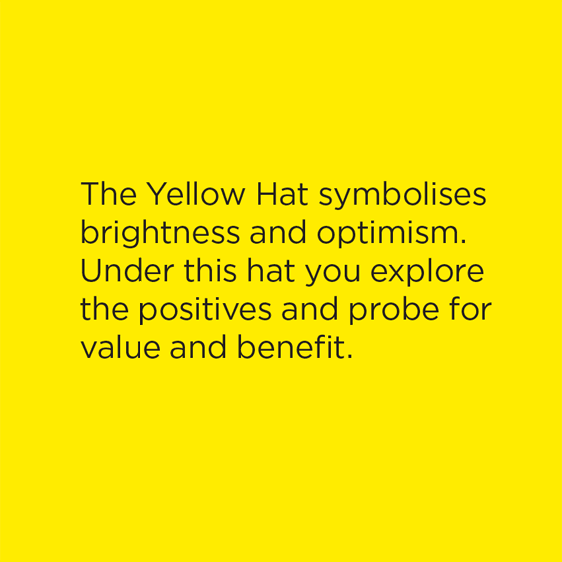
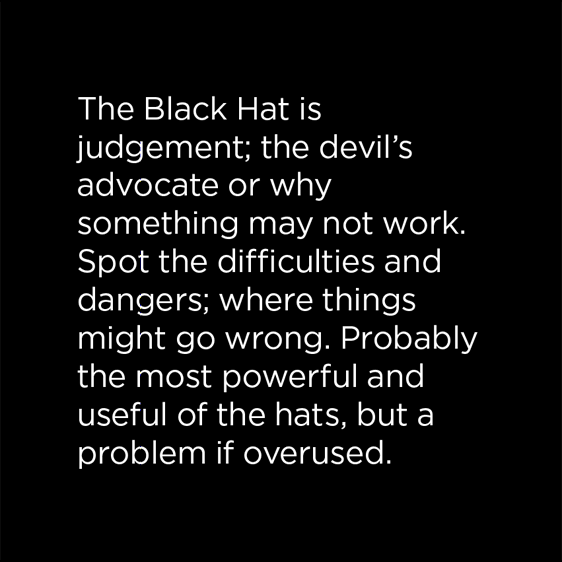
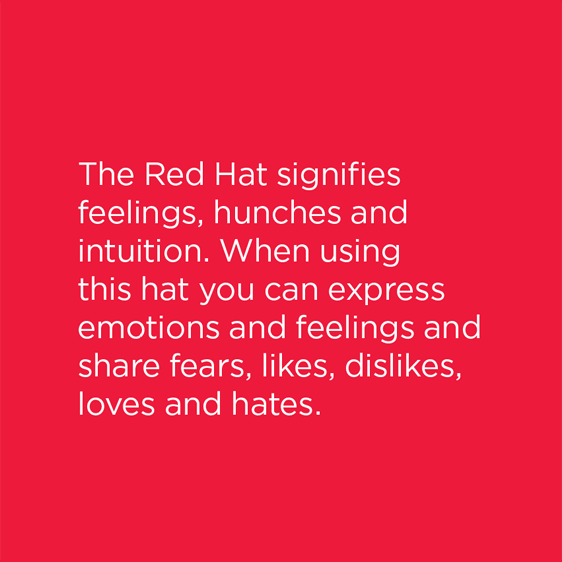
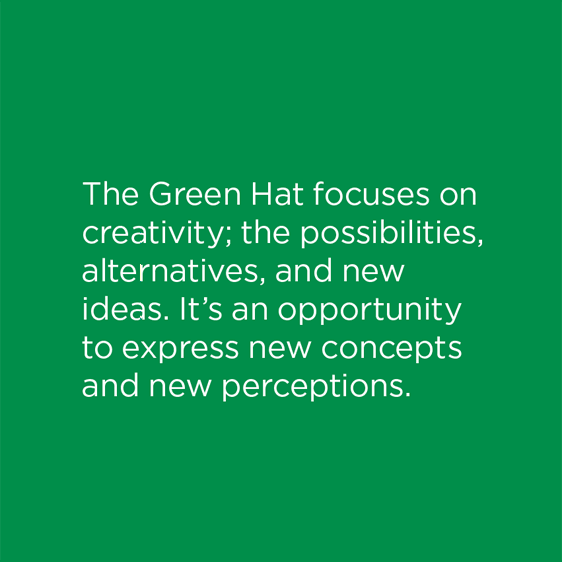
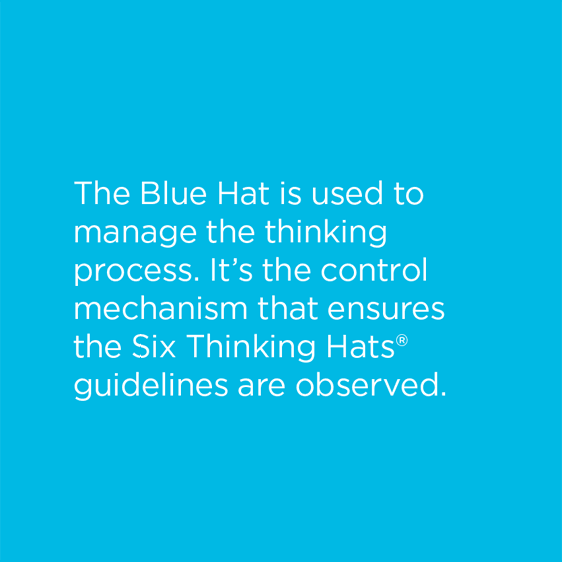
In his book The 7 Habits of Highly Effective People, Stephen Covey has a chapter on “Principles of Personal Leadership”.
In this chapter he invites us to think about attending our own funeral at which there are four speakers:
- The first is a family member
- The second is a friend who can give a sense of who you were as a person
- The third is someone from work
- The fourth is someone from a community organisation that you have been involved in
What would you like each speaker to say about you? What will they say about your character and the difference that you have made in their lives? Whilst this is a sobering activity, it helps to clarify what is important. This module will help you to scope what really matters to you, who you really are, and what is important. This is challenging, and the answers to these questions will emerge, evolve and change throughout your life. You will need to find a quiet space to complete some of the tools. Don’t rush it.
The intent of this exercise is to help you develop a clear sense of purpose about your career. This may be expressed as a statement of purpose or direction, as an aspiration or as a goal(s).
- Identify a “Golden Moment” in your working life, a moment where you felt completely fulfilled and valued, when you have contributed something special and made a difference
- Write down: (a) What the situation was (b) The key elements / qualities (c) Any other key words or phrases
- Repeat steps 1 & 2 above, describing approximately 5 such “Golden Moments”
- Using the notes generated, develop a statement beginning something like:
When writing your statement, some will find this more difficult than others and it may be appropriate to simply note the key elements so that you can refine the statement later. People have been known to work on statements such as these over many years before they arrive at something that is satisfying.
Another approach to thinking about your life purpose is to write a newspaper article that you hope to read about yourself in five years’ time. What would the headline say? What would be the strap line underneath? And what would the article say about you, your achievements and your purpose? When you write your article don’t just think about work-related news; think about your whole life.
This tool looks at your life from four different perspectives. Using each heading from the box, write your thoughts. If you prefer you may wish to draw something that represents your vision. Alternatively, there may be a picture in a magazine that summarises your feelings and thoughts. When you have completed it, reflect on what has emerged. Is there an area that you want to focus on? What might you do to move towards your vision in a given segment?
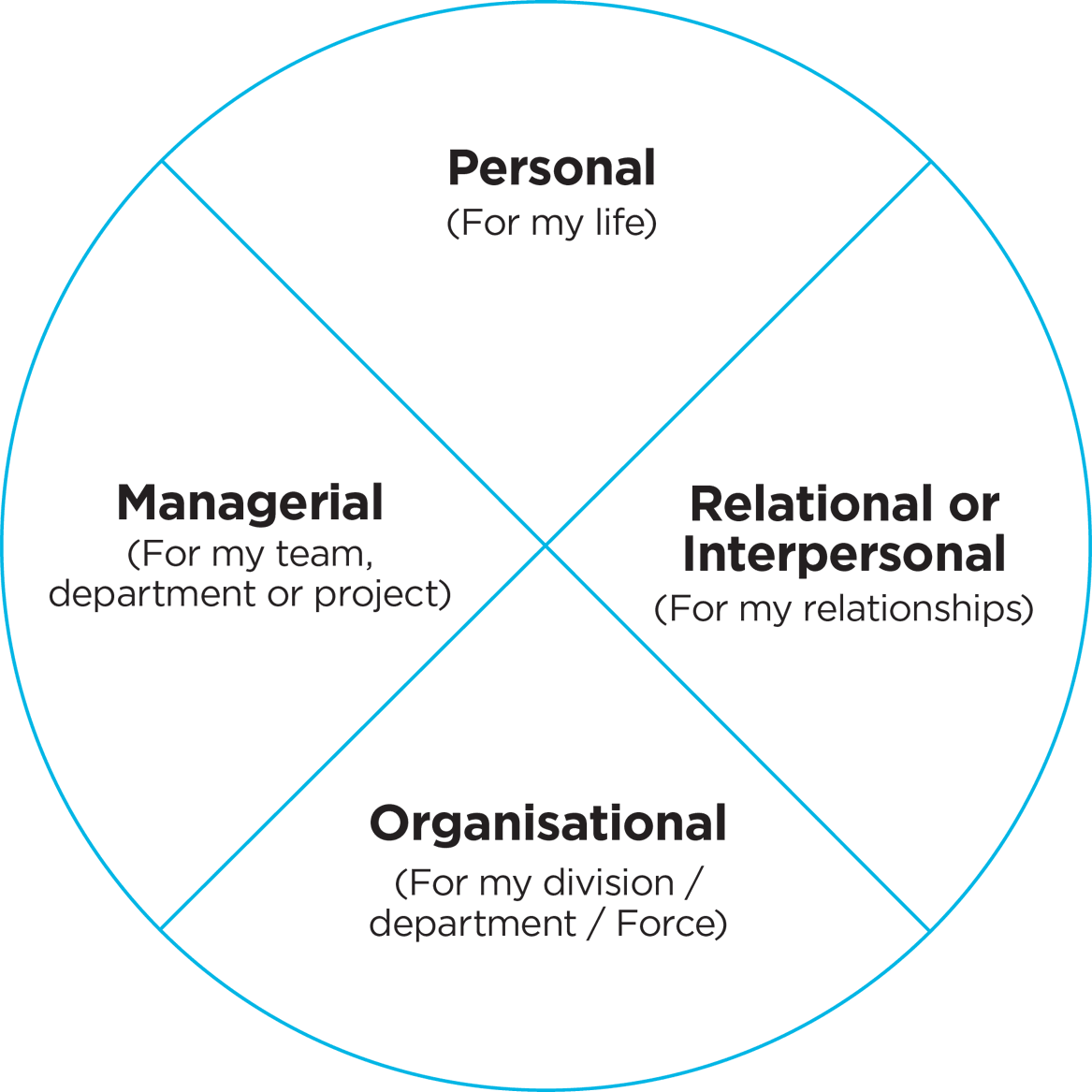
What if you could truly be yourself at work? You will hear people say:
- “I am not like this at home”
- “Better not let the boss hear you say that”
- “You have to play the game”
- “I don’t do politics”
During a typical week you are probably asked “How are you?” more than once. Think about what happens next. It is likely that you have a brief (and possibly untrue) answer of “Fine thanks”. Alternatively, we have come to realise that if we did start to fully answer the question, then the other person probably wouldn’t listen. Some teams start their meetings by asking “How are you?” and listen carefully to the response.
This is an opportunity for people to reveal who they are, what matters to them, how life is. It makes a great impact on the performance of a team, especially when things go wrong. By allowing yourself to be fully understood by others you create an opportunity for genuine support when you most need it.
We all have a sense of self that we might describe as the “real me”. We then add to the real me depending on the social setting we find ourselves in. This is known as “Persona”. As per the diagram below.
It is natural that we adapt ourselves according to the situation we find ourselves in; that is a socially intelligent thing to do. The critical aspect is how much adapting we do. When you are in the presence of someone who is more persona than real self, you will know it. Somehow they don’t seem authentic; they seem to want you to believe things about themselves and you don’t really trust them. We are very clever at picking this up, even if there is no evidence to support our uneasy feeling. How do you fare in this? Are there some situations when you put on an act because you think that is what is needed?
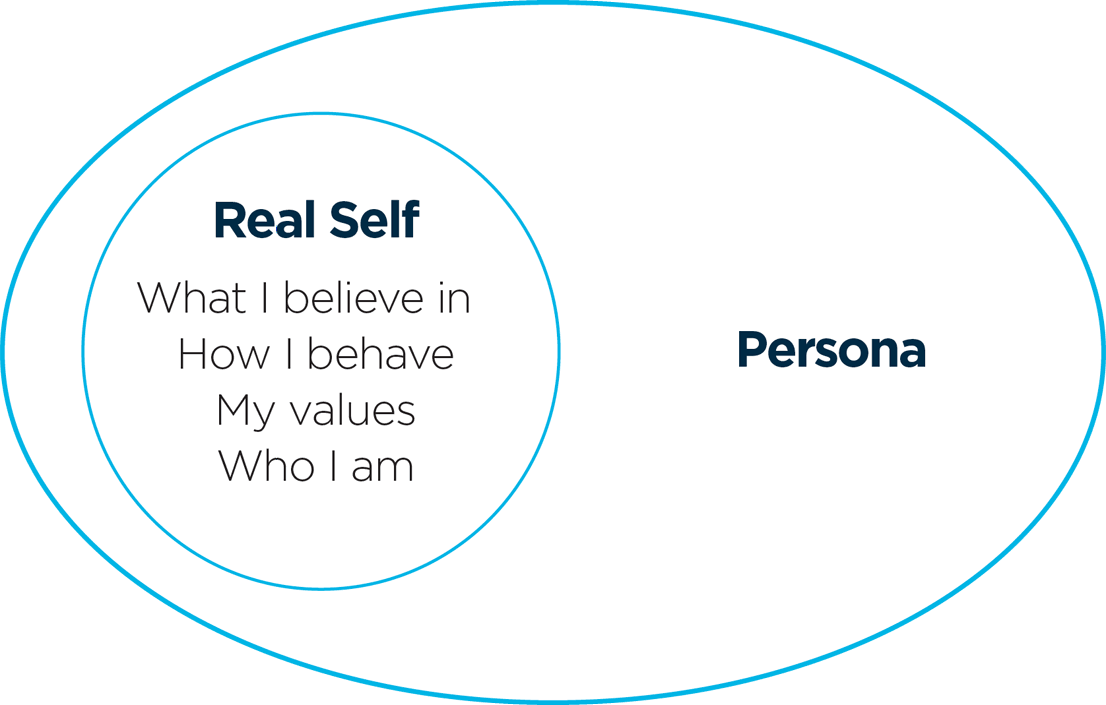
If there are, people will probably notice. It is difficult to try to cover up an aspect of your real self as you will undoubtedly slip up from time to time.
To understand your real self, start with a blank piece of paper. Draw a circle that represents your whole self (i.e. real self and persona). Now think of you at work and draw a circle whose size represents how much of your real self you share at work. Inside the “real self” circle write words that represent:
- What I believe in
- How I behave
- My values
- Who I am
Then move to the “Persona” circle. Think about how you behave in different contexts and what you hope people will think of you. What words describe you now? Which words from your “real self” description fit into both circles?
If you would like to grow more into your real self, think about the following:
- What assumptions am I making that stop me from being who I am? (e.g. my humble beginnings mean I am not Officer material)
- Who is my role model for being real? (they can be people at work, anyone in the public eye, e.g. sports stars)
- What can I do to let people see the real me? (e.g. perhaps you could admit to not knowing something from time to time and see what happens)
As you gain insights you can start to explore options for increasing the size of your real self circle and minimising your persona circle (remembering, however, that we all have some persona attributes).
A key contributor to our overall sense of wellbeing is feeling that the work that we do is worthwhile. Think back to the start of your career. When you were making career choices there will have been lots of contributing factors. These will range from hygiene factors (will they pay me enough to live on?), through to social factors (what hours will I work?) and include a deeper search on your purpose (do I believe in what I will be doing?). After a few years we can start to lose sight of what attracted us to this career choice. We can get side-tracked by the small irritants that take on more importance than they ought to. We remember the one thing that went wrong in a day that was mostly good. If you have lost sight of the purpose of your work, think about the following:
- What is it about my work that is important?
- How does what I do contribute to the wellbeing of mankind?
- What is the social value of my role?
- What have I done today that has made a difference to another human being?
As you start to answer these questions be aware of your self-esteem. We all like to feel that what we do matters, and when we lose track of that our self-esteem reduces. This is an important emotion that directly links to our sense of wellbeing. If you find that you have lost your connection to worthwhile work, you could write yourself a paragraph to remind yourself.
If you are interested in reading more about this try Gung Ho! by Ken Blanchard and Sheldon Bowles.
Each of the following tools can be done within a minute. They are designed to give you a quick mood boost and shake you out of feeling bored, fed up or negative. They are simple, easy to understand and don’t need any specialist equipment. Give it a go; you probably have nothing to lose.
Random acts of kindness not only brighten the day of the person on the receiving end, they also provide a boost to the giver too. What is the smallest thing that you can do to make the biggest difference to someone else’s day?
- Buying a colleague a coffee unprompted
- Letting a car out of a side street in busy traffic
- Doing a chore for your partner
- Buying a treat for your children out of the blue
- Getting your favourite photo printed for a friend
- Telling a colleague what you appreciate about them. Try it and hold on to the good feeling that you get as a result
The next time you see a beautiful view don’t drive by. Stop and gaze at it. Be part of that moment and think about all the things in your life that make you happy. Big or small it doesn’t matter. What does matter is that they mean something to you. Notice every detail about this moment: the colours, the sounds, and the sensation of being connected to something. Even when life is tough try this out. It will give you respite from the stress and anxiety as you lose yourself in your environment. Your brain will feel nourished as you relax and restore your energy as you move on to the next task.
Some people write a Gratitude Journal. As the day draws to a close they write down one thing about the day that has been special. It is a lovely way of checking out of the day and makes great reading when life is challenging.
Research has proved that those who think positively are likely to lead healthier, more successful lives. However, bad things happen to all of us. So, when something bad happens to you, try to think about three things that have happened recently that were good. Some people do this daily, last thing at night as they reflect on their day. By leaving your day recalling three positive experiences you will be more relaxed and sleep better. Don’t look for big deal events; it is often the small things that make a difference.
Some days it feels like life is taking us over. You rush from one task to the next, your mind going at 100 miles an hour. How long can you keep that up? Even the busiest person can find one minute in their day to stop and be calm. To do this, find a quiet space where you will not be interrupted. If you are sitting down, sit straight in your chair with your feet on the floor. Focus on your breathing. If thoughts come into your head allow them to pass through without paying them any attention. Continue to focus your attention for a minute or until you are ready to open your eyes. Even after a minute you will feel calmer. Have a drink of water and carry on with your day.
Any task that is likely to take less than one minute to complete must be done immediately. It doesn’t matter what else you are working on, the rule is observed. This will include:
- Unsubscribe from junk emails
- Throwing an unwanted letter away
- Putting your rubbish in the bin rather than leaving it on the desk
- Deciding what to cook for dinner
- Putting newspapers in the recycling bin
- Booking the dentist appointment
Because this task is quick it should not be hard to make yourself follow the rule. But it has big results.
Science has proved that you can trick your brain into being happy, even if you are facing a challenge. This tool is often used by people who are just about to go into an interview, or presentation. You should develop a short sentence about yourself that you know to be true. An example might be:
“I am a successful Police Sergeant who deserves to be promoted to Inspector”.
By repeating this affirmation over and over, your brain will believe it to be true, and your body will respond accordingly. You will start to feel calmer, more confident and more positive.
Another take on this tool is to use it every day, not just when you have a big event ahead. Spend time developing your own mantra, something that gives you a positive sense of wellbeing. Then repeat it every day, many times if necessary. You will find that you have fewer challenging moments, as your brain is full of positive energy. If you can find a quiet spot, say your mantra out loud as this is more powerful than simply thinking the thought.
Try this experiment:
For just one day frame every incident, experience, interaction in a positive light. This won’t happen automatically; you will have to find a way of putting a positive spin on it. This activity is known as reframing, and is used by coaches and therapists in the world of sport and business.
As an example, if you find your drive to work an irritation, why not remind yourself about the wonderful views, or recapture happy memories as you pass familiar places. Enjoy the sensation of that happy moment.
At the end of that day, think back on how you found it, and how you feel right now. What has happened to your stress level? Did you find some unexpected good moments in what could have been a pedestrian type of day?
If this works for you, feel free to repeat it. It does not have to be “Just for one day!”
Barbara Fredrickson
This book has lots of research to support the view that positivity helps us at every level, from mental wellbeing to day-to-day health. She talks about the positivity ratio of 3:1. By this she means that if you wish to move from languishing to flourishing you should experience three times more positive emotions (such as joy, love, curiosity) than negative emotions. However, you cannot force yourself to do this; it is more about creating the right mindset and any positive emotion should be heartfelt. She also acknowledges that it would be unrealistic to aim for no negativity. Life creates challenges and we don’t always respond positively. There are some useful exercises in the book to self test on your positivity ratio.
by Robert Emmons
This book focuses on practising gratitude and the impact this has on your wellbeing. He claims that by practising gratitude can increase your “set point” for happiness by 25%. This means better sleep and more energy. He challenges the notion that some people are born with a happy or unhappy disposition and this cannot be changed.
by Martin Seligman
This book is written by one of the founders of Positive Psychology. His model for wellbeing is PERMA: Positive emotion; Engagement; Relationships; Meaning and Accomplishment. He differentiates between happiness (something which swings with mood and is easily but unsustainably attained through pleasurable but pointless activity) and wellbeing (which enables you to build lasting relationships, to feel pleasure and to contribute meaningfully to the world).
by Dr. Steve Peters
The premise of the book is that the brain can be divided into three parts: Human (frontal brain); Chimp (limbic brain) and Computer (parietal brain). The Chimp is an emotional machine which thinks independently of the rest of the brain. Its purpose is to offer emotional thoughts or feelings that can be either constructive or deconstructive. The computer stores information for reference only, and only stores what the Human and the Chimp put into it. It functions automatically. The aim of the book is to help you manage your Chimp. The book looks at seven areas: Inner mind; Understanding and relating to others; Communication; The world in which you live; Your health; Your success; Your happiness.
by Norman Vincent Peale
This book is written from a spiritual perspective, with many references to God and the Bible. He gives techniques and examples for creating peace of mind, improved health and a constant flow of energy. At the end of each chapter is a list of tips for practice. A key technique is the use of positive affirmations (see One Minute Tools for more on this). Although his suggested affirmations are taken from the Bible, the technique can be powerful with a self-developed mantra.
by Prochaska, Norcross and Diclemente
This book has a six-stage process for making permanent behavioural change. Great chapter on the pre-contemplation stage, or denial stage, i.e. the stage when we are being told we need to make some changes in behaviour but choose to ignore it. There are then a further five stages: Contemplation; Preparation; Action; Maintenance; and Termination. There is a useful scientific underpinning throughout. Although most of the examples cited relate to health issues (smoking, drinking, overeating) the principles still apply to smaller scale behavioural change.
by Robert Holden
Focuses on “personal alchemy and inner transformation” with references to the “unconditional self”, i.e. that version of you that is real, untainted by the stuff that happens in everyday life. He describes the greatest illusion as the fear that something is missing somewhere in you or your life. This leads us to looking outside ourselves for happiness. The key to making a shift in your self-perception is unconditional self-acceptance.
by Alan Cohen
Describes happiness and contentment as choices available to us, irrespective of what is going on in the world. A conscious way of being that accepts that what you seek is already contained within you. That is not to say that it encourages standing still. The book explores ways of appreciating what you have and reaching for further growth. The book is written so that you can dip in and out of different chapters, depending on what takes your interest.
by Paulo Coelho
Paulo Coelho has written many books, all of which contain a core message via metaphor. This book traces a journey on the well-known pilgrimage route to Santiago. Each of the trials met by the pilgrim represents a lesson in life and there are also some exercises for the reader should they be facing similar issues. Another great book by Coelho is The Alchemist.
by Wayne Dyer
Wayne Dyer is a prolific author of self-help books. Most of them are based on his own poor upbringing and his route to huge public and commercial success. This book is a guide to nine principles for “Creating habits to match your desires”. As an example, the chapter “You can’t kiss your own ear” explores the difference between how you perceive yourself and how others may perceive you. The book has a lot of practical tips and is written in a conversational, easy to read style. There are also lots of YouTube™ clips of Wayne Dyer.
by Robert Sapolsky
This book is written by renowned primatologist Robert Sapolsky and features new chapters on how stress can undermine your health, new insights into anxiety and personality disorders and the impact of spirituality on managing stress. As Sapolsky explains, your body was designed for the African savannahs not the urban jungle. The ‘flight-or-fight’ mechanism that we used to escape peril now kicks in during our busy city lives, but because stress now is often prolonged it intensifies a range of physical and mental afflictions, including depression, ulcers, colitis, heart disease, and more. Sapolsky explains what you can do about it and anyone experiencing stress should give this book a read.
by Emily Esfahani Smith
We all look for meaning in our lives. Some travel to remote monasteries, others flick through pages of philosophy books. This book argues that there are untapped sources of meaning all around us - right here, right now. Using the latest research in positive psychology, Four pillars upon which meaning rests are laid out: Belonging We all need relationships in which we feel understood, recognised and valued - to know we matter to others. Purpose We all need a far-reaching goal that motivates and drives us to make a contribution to the world. Storytelling We are all storytellers and need to assemble our experiences into a coherent narrative that allows us to make sense of the world and ourselves. Transcendence During a transcendent experience, we feel we have risen above the everyday world and are connected to something vast and meaningful. An inspiring read, this book will strike a profound chord in anyone seeking a richer, more satisfying life.

